#costume historian weighs in
Text
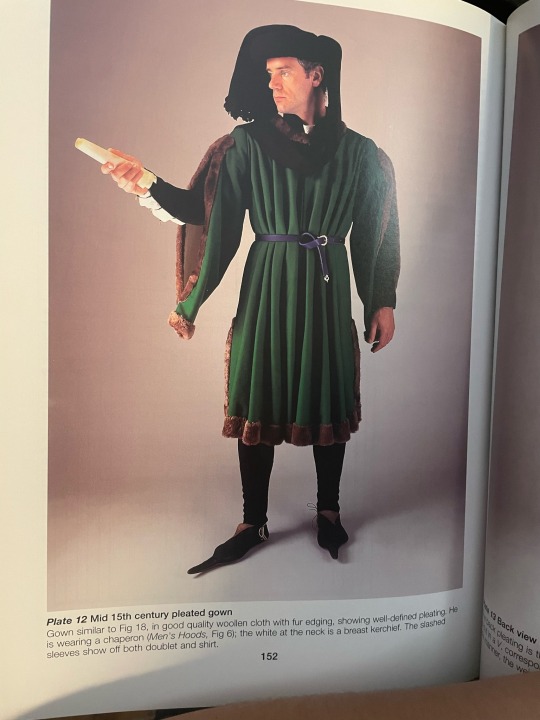

heyyo I was looking through “Medieval Tailor’s Assistant” and saw someone that reminded me of the babe
34 notes
·
View notes
Text
Co-chairing & attending the met gala with timothee...
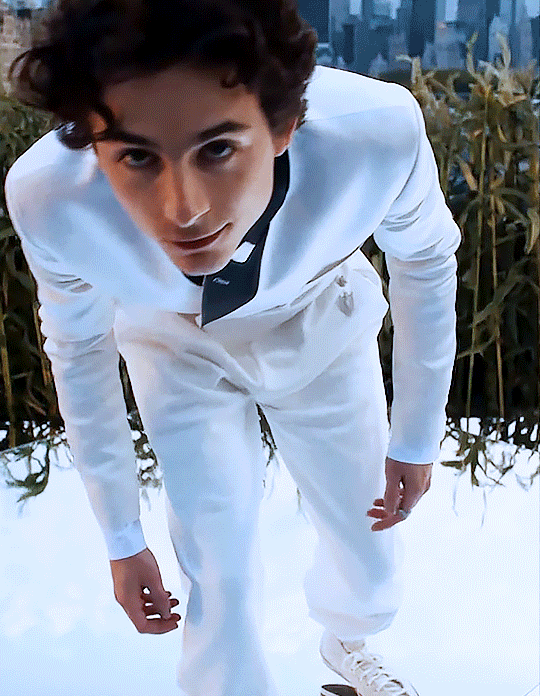

Inspired by the fashionista couple Ryan Reynolds and Blake Lively both co-chairing this year and you two as a couple with Timo would not disappoint either
This year’s theme was Guided Age- you both poured over even the finest details from the colour scheme, fabric, the accessories like hats, shoes and the historical period you’d be referencing
You two binged the show Gilded Age on HBO the past few weeks leading up to it while having meetings with designers like Haider Ackermann and some ateliers/historians familiar with the time period
But at the same time you wanted a touch of the modern age and not just a historical recreation; you’d reference the spirit of the time period but have a modern twist to it
Compared to the white navy look he had last year (you couldn’t come last year as you were in locked in taping for one of your movies), you were thinking of either gold or a little bit of red velvet
You could either go like a pastel, light colours like creams or lavender/pale blue but you wanted to go all out with the extravagance of the era
Timmy wore a red velvet suit/long trench coat to the tailoring of the era, with gold linkcuffs, gold jewelry scattered throughout his suit on his pockets, etc
He wore a golden inner vest and brown tie alongside plain black pants and black dress shoes; he brought a top hat and a wooden brown cane with him too (y'all were on the fence if the one eyed glasses was too much? Up to you)
Meanwhile you wore an off the shoulder, low cut golden dress with a red velvet bodice with gold ribbons and jewels embroidered into it; you were loaned jewelry from the jewelry house you were ambassador to
You had a string of pearl chokers and then had ruby and gold necklaces stringing down your torso
Your hair was put up into an updo with intricate curls as you had a fancy hat reminiscent of the hats the Royals would wear at like royal derby races, referencing what was worn at the time
You felt a sense of pride that you came with the love of your life at one of the finest fashion fundraising events of the season; you both loved and really cared about fashion and to do it with your significant other was extremely rewarding
The cheers and gasps that would follow everytime you both would walk, and this only heightened as you ascended the famous Met stairs
He escorted and guided you up the stairs with a helpful arm just in case you needed it, especially with how heavy the petticoat of the dress would weigh you down
You wouldn’t miss the prideful smile he would have as he circles an arm around your waist, like loudly telling the world that you’re his, and he is yours.
You’re both usually dead silent and protective of your privacy as a couple; confirming in interviews but giving no other info than “yes, we are in a loving and committed relationship” so this is your big first debut on the red carpet together
The pride that you ‘chose’ each other even though so many other amazing, talented and wealthy people in the industry - you’ll always lead yourselves back together
So when it was announced you would co-chair together, you were slightly afraid but almost relieved that you didn’t care what others said and could be happily, openly together
Once you got in, you had an amazing time, indulging in the luxurious, fine dining, the champagne, the cocktail foods before hitting the dance floor
Inspired by your costumes, you both would dance overdramatically to a waltz like those period dramas, causing many in the crowd to laugh
Not pressured by the paparazzi or wandering eyes, you both eventually split off to talk to the other attendees for the night and garnering compliments from them left and right
Blake especially holds on to your hand, someone you see like an older sister, and compliments you to the high heavens and how glad she was to be able to co-chair with you and both your significant others
She comments how much she sees the genuine love you share with Timmy and its reminiscent of her bond with Ryan and you can’t hide your blush, which she jokingly teases you for
You and Timmy come home from the after parties, drunk on liquid courage, and high on the adrenaline and joy of being together, through thick and thin, behind the cameras in private or at one of the most prestigious red carpet events in the industry.
#Timothee chalamet imagines#timothee chalamet scenarios#timothee chalamet x reader#timothee chalamet headcanons
401 notes
·
View notes
Text

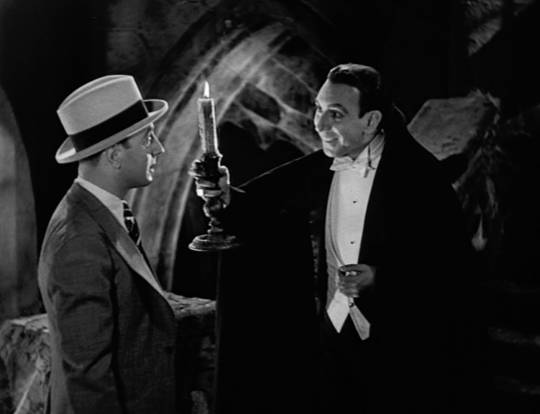
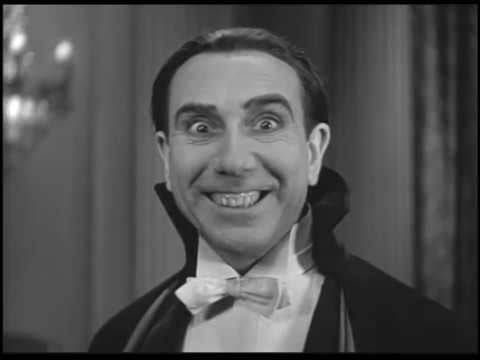



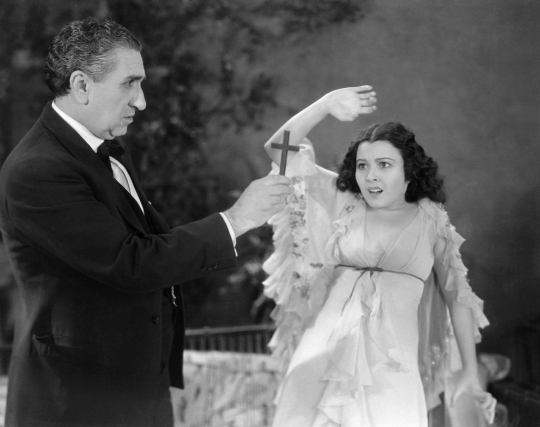

THE SPANISH DRACULA'S FACIAL EXPRESSIONS ARE FUNNY.
It can be seen as a bonus film, in the Universal Studios DVD and Blu Ray set, 'DRACULA LEGACY EDITION'.
Via the web:
The Spanish version of "Dracula" 1931. Based on the same story and play, and mostly the same script this was filmed at night on the same sets as the more famous Lugosi/Tod Browning version, and in many ways is a superior film.
It is far less static cinematically and gives more screen time to the Renfield character (magnificently played by Pablo Alvarez Rubio!) Lupita Tovar's presence and performance are in bold contrast to what Helen Chandler gave in the American version (I have always found Chandler to be lovely but a rather colorless actress, sorry) and really elevates this version but sadly Carlos Villarias' portrayal of Count Dracula can not even begin to compare to the magnetically compelling Bela Lugosi.
The film was made as part of Hollywood studios' attempts to make films for foreign-language audiences. By 1930, Universal had focused primarily on developing Spanish-language films for the foreign market. Filming began on October 10, 1930, where it was shot on the same sets as Tod Browning's production of Dracula. Director Melford watched the footage of the same day and applied what he saw to film his own version of the film.
The film was released in Cuba in 1931 and for a long time was a forgotten film, only mentioned briefly by some horror film historians in the 1960s and 1970s. The film received greater attention after a screening at the Museum of Modern Art in 1978 which led to a popular home video release on VHS in 1992. Critical reception to this film often compared the two versions of Dracula with some critics weighing the pros and cons of both films based on the explicitness of the Spanish version with its costumes and scenes, the film's length, and the performance of Carlos Villarías as Count Dracula.
8 notes
·
View notes
Note
autumn asks
Costume Macabre Pumpkins Spooky
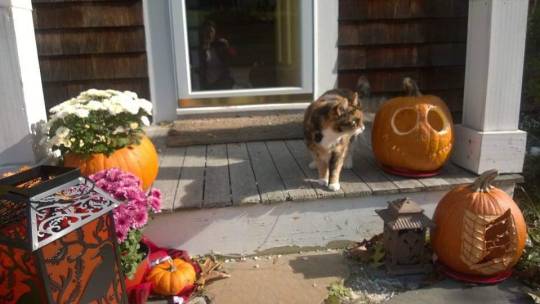
💚
Hi my lovely Hazel! 🧡
Costume: do you like to dress up for Halloween? Do you have a go to costume?
Yes and yes! I have a Tenth Doctor outfit that I break out pretty much every year, and at least one day of comic con. I cheat and use a waistcoat instead of a full jacket because I would die of heat stroke. Especially since the tan trench coat is WOOL and weighs about 12 pounds all on its own.
Macabre: you have peculiar interests?
How do you define peculiar? I'm a historian. I love stories. Myths. Legends. And all the horrific shit that humans have been doing to each other since before writing was a thing.
Pumpkins: do you like to carve pumpkins? Any favorite designs?
I like to, I just haven't in a few years. I tend to go classic jack-o-lantern!
Spooky: do you believe in the supernatural?
William Shakespeare gave me the perfect quote to use here. Hamlet, Act 1, Scene 5. "There are more things in heaven and earth, Horatio, than are dreamt of in your philosophy."
Autumn asks!
1 note
·
View note
Text
Tracking the steps of the Deer Dancer

Some years ago, in Southern Arizona, a friend advised me to beware of the desert's spiky plant life. Sure enough, wandering the zigzagging paths through the canyon, I found myself picking fine spines from my clothes and skin. Learning to minimise this risk, I started paying attention to the ground and noticed human trails intersecting with animal tracks – javelina, coyote, and especially deer. With no rain for weeks, hoofprints remained debossed in the dry earth, like chains of split hearts, or strings of letters. Where clusters of tracks had accumulated, it looked as if the deer had been dancing.
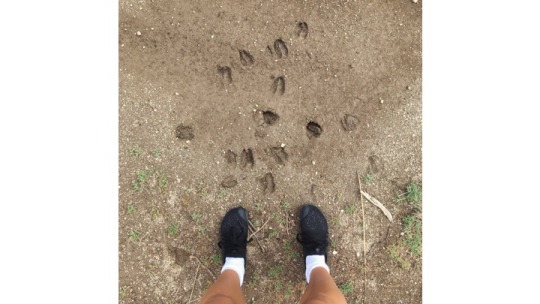
During that same visit, I came across a copy of the book Yaqui Deer Songs / Maso Bwikam: A Native American Poetry, edited by Larry Evers and Felipe S. Molina. Originally from the Río Yaqui, the indigenous Yaqui (or Yoeme) people now reside across the divided borderlands of Sonora, Mexico and Arizona, USA. I read that before setting out to hunt, their ancestors held a festive rite, enacting the wilderness world through a series of songs that address the deer, asking forgiveness for those animals that will die. Though hunting is rarely practised by present-day Yaqui, traces of the tradition remain extant in the Deer Dance, wherea single male dancer becomes the Maaso– the deer – and, wearing a stag headdress, he imitates the movements of a white-tailed deer.
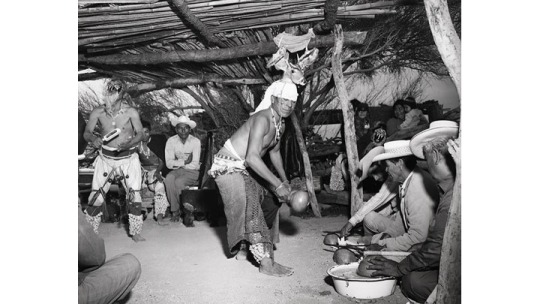
I was struck by the ways in which the photos of the costume bore a resemblance to some images I'd seen of the antlered headdresses found at Star Carr, a Mesolithic site in Yorkshire. Archaeologists have suggested that these red deer frontletswere worn in hunting rituals, allowing the wearer to harness antler effects, gaining access to the perspective of the 'animal-in-action'. Could this also be true for the Yaqui Deer Dance?
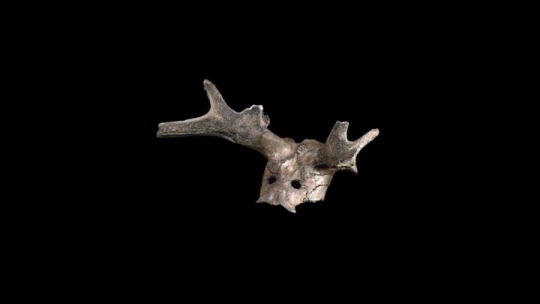
Pondering these connections, I recalled two dances I'd heard about in the British Isles – the Abbots Bromley Horn Dance of Staffordshire, believed to be a memory of a celebration of villagers’ hunting rights, featuringsix men bearing mounted antlers said to move like deer, and the Scottish Highland Fling, thought by some to have its origins in a warrior’s dance imitative of deer, with hands held aloft for antlers.
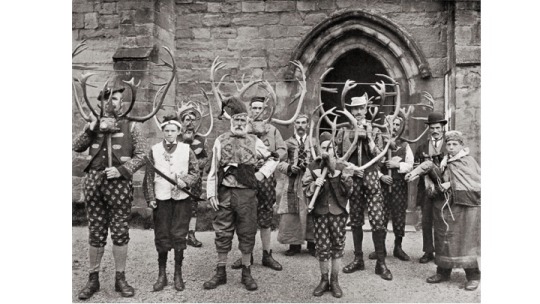
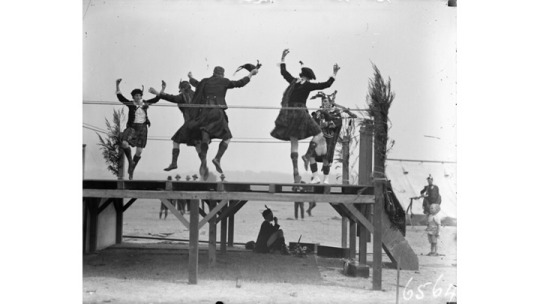
'Mimesis' – the imitation or emulation of the more-than-human-world – in traditional music and dance is something I've explored over the years, from Scottish Gaelic vocal imitations of birds, to the practice of embodying a river in South Indian Kutiyattam movement. I was keen to find out more and studythese three'deer dances' in tandem.What kind of deer effects are harnessed in these dances? Which deer behaviours are imitated and why? What do they reveal about our relationship with deer and ecology?
Over the next couple of years, I made numerous field trips to observe dances, interview practitioners, and learn steps directly from tradition bearers. Spending time observing deer, I consideredthe ways in which their behaviour is emulated in the dances and, learning about the ecologies of their habitats, I examined their relationship to hunting, stalking at Trees for Liferewilding estate in Dundreggan, and animal tracking in the Sonoran Desert. I was particularly interested in exploring the 'tacit' knowledge embodied in the dances. What could be discovered by 'learning' and 'doing' these dances, as opposed to just 'watching' them? What could be discovered in the body, through practices of stalking and tracking, instead of simply 'reading' about them?
Needwood Forest, Staffordshire...
I first went to see the Abbots Bromley Horn Dancein September 2017, and then again in 2018. This folk dance takes place once a year in the Abbots Bromley village, near to Bagot's Wood, an area of woodland just one and a half square miles, which is all that remains of the ancientNeedwood Forest. Like most forest in Britain, historically it was property of the Crown and, in this case, was once parcel of the Duchy of Lancaster.

Today the word 'forest' refers to an area of wooded land, but the medieval sense of the word referred to land set aside for royal hunting. The 'Royal Forest' included large areas of heath, grassland and wetland, essentially anywhere that supported deer and other game.Villages and towns that lay within it were subject to forest law, protecting the 'Beasts of the Chase' from being hunted by anyone except the king, safeguarding the habitat in which they lived. These 'beasts' were primarily deer, and included native red and roe deer, as well as non-native species such as fallow deer, introduced to England for the very purpose of hunting.
Every Royal Forest in England was overseen by a keeper who was appointed by the King, and whose position was often hereditary. Forest Law meant that it was illegal to hunt deer, chop down trees or underwood, unless permission had been given by the Crown. Penalties for offenses were severe, but by 1217, the death penalty for poaching had been abolished. This didn't stop some kings; during the reign of Henry VIII, a yeoman named Richard Horne was caught poaching deer in the woods and was hung for his crimes. His ghost, known as Herne the Hunteris said to haunt Windsor Forest, with antlers growing from his head and chains rattling behind him.
Within the structures of Forest Law, payment for access to certain rights became a useful source of income and local nobles could be granted a licence to hunt an agreed amount of game, giving forest inhabitants a variety of rights. As I mentioned, theAbbots Bromley Horn Danceis believed by some to be a memory of a medieval celebration of villagers’ hunting rights, possibly recalling the act of giving thanks to the local nobility for access to the Royal Forest. Others believe it was danced to ensure a successful hunt, or a good harvest. The forest itself was largely lost in the eighteenth-century due to deforestation. With all this in mind, I couldn't help but think that the Horn Dance was taking place in an imaginary landscape, in the ghost of a place that no longer exists.

The dance itself featuresten dancers: six deer-men carrying mounted antlers, a hobby horse, bow-man with his bow and arrow, Maid Marian (or man-woman) with their stick and ladle, and the fool with his pig's bladder. The antlers are mounted onto carved wooden deer heads at the end of sticks, reminiscent of a child's hobby horse toy. Surprisingly the antlers are not native; carbon dated to 1065, they came from reindeer, long extinct in Britain.
At eight in the morning, after collecting the horns from the church, the ritual begins. Moving in procession, the horn dancers exit the church yard and, on a street corner in the village, they perform a sequence of steps, circling and winding in time with the accompanying music performed on melodeon and triangle. Though stylized, particular movements are especially mimetic. Recalling the rutting behaviour of a number of species of deer, the dancers move together in a parallel walk, and then face one another, moving towards and away, passing through, as if clashing antlers during a fight. Followed by villagers and visitors alike, the horn dancers and their musicians proceed to beat the bounds of the village, walking over ten miles throughout the day, performing at each farm and pub. Taking a drink at every stop, as you might imagine, banter follows, with jokes erupting at every turn. The music is constant and consistent and, soon enough, I found myself humming along with the tunes. The sound of the triangle was particularly affecting, cutting through the cacophony of sound.

At Blithfield Hall, the tone changes considerably. The hall, a Grade 1 listed country house owned by the Baggots, has been in the family since the 14th century. The horn dancers perform on the lawn outside and when the music stops, they stand in line and wait. The Lord and Lady of the house then proceed to shake each dancer's hand, while the audience looks on from across the boundary wall. In a legacy of class inequalities, the memory of a celebration of hunting rights becomes particularly visible. Back in the village, the dancing finishes at about eight pm, when the horns are returned to the church, to be hung on display until the following year.
During the dance, I met Jack Brown, a tradition bearer and local historian, now in his nineties, who was dressed as a fool in yellow tails. He explained that he had "played all the adult parts" in the Abbots Bromley Horn Dance – deer, hobby horse, fool, man-woman and musician – and invited me to visit him at his home, a treasure trove of photos and objects, including props from the dance – a pig's bladder, triangle, bow and arrow, and stick and ladle. Jack shared with me his memories and knowledge of the dance's history and gifted me a pamphlet on his interpretation of it.
The horn dancers themselves are also very generous, opening up the floor – or ground – to participation, and over the two years I visited, I took part in a number of dances, giving me direct insight into the movements, shapes and step formations, as well as an embodied understanding of the sheer weight of the horns. Weighing between sixteen and twenty-five pounds, it is physically difficult to dance with these objects, to carry and move with them. Reindeer antlers are larger than red deer – our biggest native species – and if, as it has been suggested, they were imported from Scandinavia, perhaps we could say that the dancers of yesteryear were attracted to their size, in order to 'harness their effects'. What are these effects, I wondered? The size and weight of the antlers certainly enhances a performance of physical strength, perhaps showcasing 'heroic' abilities of endurance. During times when hunting was commonly practiced, these were presumably important attributes.
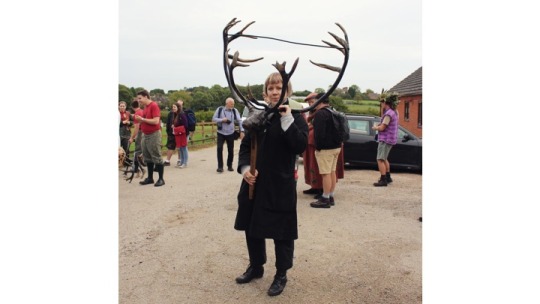
The props are most deer-like during the 'fighting sequence' when the antlers become like weapons between three pairs of rutting deer-men, albeit in an incredibly stylized rut. Some folklorists have posited that the Horn Dance was a fertility ritual; the antlers in this case would be symbolic of the male sex organ. Was this a mimetic display of the stag's bravado? Certainly, at some point, multiple powerful effects were being harnessed.
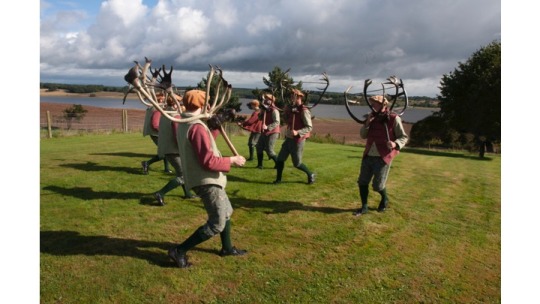
Back in the studio, I began to make sketches, tracking the shapes made on the ground by the dancers in a series of visual scores. Returning the following year, I showed my score sketches to Jack, and to Jim, a deer dancer whose family, the Fowells, have been performing the Horn Dance since 1914 after it passed to them from the Bentleys – interestingly, the Bentley family were historically the foresters of the local woodland. Checking the shapes and patterns on the page, Jack and Jim approved my visual notations, confirming their accuracy.
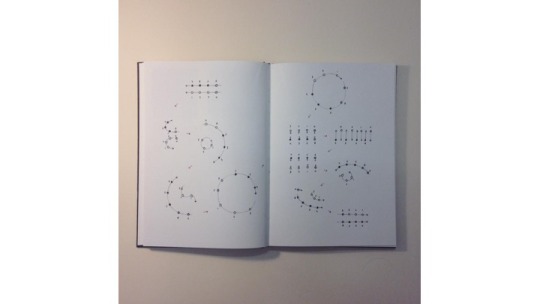
My notation process was also supported by a surprisingly fortunate booking! Reserving a room in a local B&B that looked down onto the area of the final dance, I was able to film it from above and compare the footage with my scores.
Caledonian Forest, Scotland...
The Caledonian Forest, characterised by Scots Pine trees, was once a huge forest stretching across Scotland. About 6,000 years ago, as the climate became wetter, some of the forest began to disappear, but the impact of human beings was even greater; trees were felled for ships, buildings, fuel, and to make way for agriculture. By the 1700s, the Caledonian Forest remained only in the most remote places and much of the wildlife that depended on this habitat was lost through hunting, or simply because there was not enough forest left. The last wolf is said to have been shot in Scotland in 1743, which meant that by this point, all of the predators had been wiped out. In fact, all of the largeanimals had gone, leaving only the red deer. Since then, this animal has come to symbolise the Highlands.
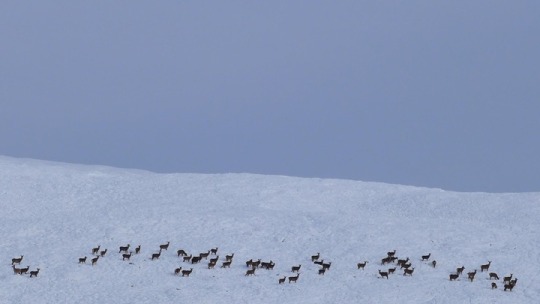
In the 19th century, as deer stalking became fashionable, large tracts of land were dedicated to deer, allowing their numbers to increase, and ‘deer forests’, which are essentially open hills managed for deer, doubled in size. Today, many Highland estates still maintain large deer populations for stalking purposes and the current number is estimated to be 350,000 individuals. Through their excessive numbers and overgrazing, deer are often seen as the problem that prevents the regeneration of the Caledonian Pinewood, however, the ecological imbalance between native forest cover, numbers of grazing deer and lack of natural predators has been caused by humans, not deer.
Trees for Life acquired their Dundreggan estate in 2008, and since then, they have been rewilding the land, planting new trees in places, such as higher mountainous areas where it is difficult for trees to establish on their own, and reducing grazing pressure to allow the forest to recover and regenerate, which, inevitably, involves the culling of deer. In 2017, I went to stay in Dundreggan, and went out stalking with Allan Common, the lead deer stalker on the estate. It was autumn, which in the red deer calendar, meant this was the time of the rut. Meanwhile in the stalking calendar, it was the time for hunting stags. I wasn't sure whether this seasonal stalking tradition was due to the fact that a rutting stag, full of high levels of testosterone, was less alert and easier to hunt, or whether it was because this hormone surge meant that the stag was now adorned with a large mane and antlers, and so more desirable as a trophy. Doug Gilbert, the operations manager at Trees for LifeDundreggan suggested that perhaps it was a mixture of the two – a legacy from the stalking craze.

Dressed in a ritual costume of wax jacket, gaiters and tweed deerstalker hat, at 7am I was met by Allan and two of his friends. Up on the hill, he instructed us to move as one body, then, as we got closer to the deer, he showed us how to lie on our bellies and remain hidden. At the edge of a ridge, we stopped to look down into a bowl-shaped area. The distant sound of roaring stags reverberated into the cold morning and, for a brief moment, through binoculars, I watched as two mature stags walked in parallel, checking each other out, before lowering their antlers, initiating contact. Throughout the morning, Allan, or one of his friends, would position a gun, then using its view finder, take a shot. Sometimes this awkward movement alerted the deer to our presence, so to counter this, Allan skilfully mimicked the bellow of the stag with his voice, to keep the stags interested. It worked! – at one point, a mature male drew very close, standing only a metre or so away. Concealed safely behind a boulder we listened to his spine-tingling roar. My heart beat fast.
While staying with Doug and his partner Joyce, a fundraiser at Trees for Life, I learned more about their work. In order to regenerate the Forest, as well as the practical task of planting trees, they explained that there needed to be a shift in values, from "seeing the land as a place for deer, to seeing the land as a place with deer in it". On the estate, it does feel as though this is happening. When I asked Allan what the biggest changes have been in his job as a stalker, he explained that it was his shift in perception; he used to think the deer were the most important thing, but now he values the land in itself, the ecology as a whole. He told me about an earlier job, working for a sporting agency, where people pay money to go shooting, but had realised some time ago, that he didn't like this 'trophy culture'. He preferred instead to have a relationship with the place, and recounted lying on his back, watching as a golden eagle flew over him, just metres above his body. His most treasured memories were not to do with stalking itself, but a connection with the more-than-human world.
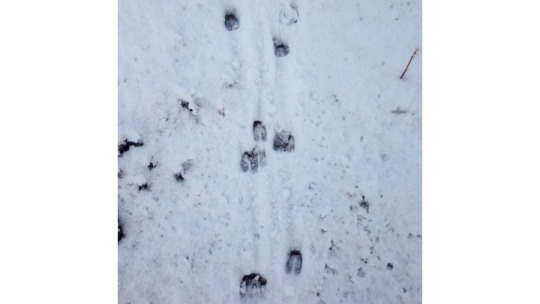
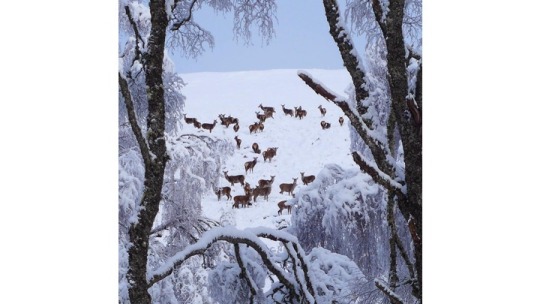
In February, when I returned to Dundreggan, there was heavy snow on the ground, and the deer tracks looked as though they had been debossed, not in earth but in thick white paper. It was the season for stalking red deer hinds, which, like the stags, were hunted in the morning. Night time was reserved for stalking the sika deer, an 'invasive' species from Japan. Being nocturnal, with a tendency to stay hidden under tree cover, they were difficult to spot. Allan used a combination of traditional tracking and an infrared thermal camera to find them. I began to reflect on the relationship of technology to the traditional costumes worn in the various dances, specifically in relation to the red deer frontlets found at Star Carr. Archaeologist Chantal Conneller has posited that these frontlets extended the body of the wearer, allowing them to "harness the animal in action", expanding their perception, essentially becoming-with-deer in order to hunt them. The user of the hunting rifle, with telescopic view finder and infrared thermal imaging also extends the body and perception, augmenting and expanding the senses, extending what is possible as a human being.
Allan may have used up to date technology, but he didn't appear to display any of the macho behaviours I had expected. His friends, however did, and on occasion, I felt uncomfortable. One ex-military friend, in particular, was keen to tell me all about his rifle throughout the stalks, even making me pose for the camera after a successful shoot. This macho sporting chat is not unusual in Scotland, in fact, it is part of mainstream stalking culture. After all, on most estates, the land is maintained as a 'wilderness' resource for deer, which supports an elite hunting economy for the privileged few – mainly rich cis white men on shooting holidays, collecting their trophies. This macho aspect of stalking is reflected in the language; the 'monarch', for example, is a term used to describe a mature stag with sixteen tine antlers, and thus the most prized trophy. Similarly, the language of animal behaviour studies is also gendered, and arguably problematic; the word 'harem', for example, is used to describe a group of female deer sharing a single mate.
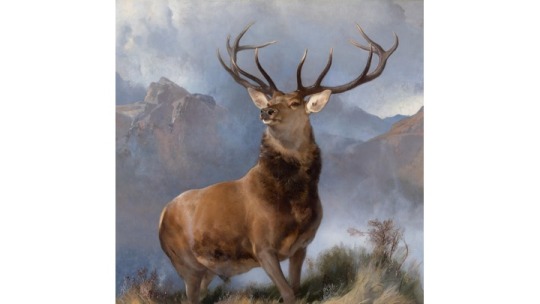
Deer stalking itself is steeped in myth and folklore. Geographer Hayden Lorimer writes: "The pursuit of deer, both as a pastime and as a livelihood, has a long history in the Scottish Highlands. Celebrations of these activities, preserved through several centuries in native Gaelic folklore, oral ballads and apocryphal yarns, were seized upon by the authors of stalking guidebooks, histories and personal reminiscences." Scottish 'deer' folklore was mined and appropriated by the cultural elite, giving deer stalking culture seeming authenticity.
The Highland Fling seems to be part of this process of appropriation. The story goes: Legend tells of a boy who encountered a stag; his father asked him to describe what he saw and, lacking adequate words, he danced the animal instead, his movements imitating capering, his hands held aloft for antlers. Becoming popular as an authentic dance of the highlands, it seems that deer mimesis gave the Fling credibility, but after some digging, I discovered that the story is more than likely a bit of 'fakelore' and probably invented by an eighteenth-century, Lowland dance teacher as a caricature of a 'wild' highland warrior who imitates deer. I couldn't help but think that this 'fakelore' shares striking parallels with the romanticisation of deerstalking, itself a mimetic performance of hunting traditions, reinterpreted and distorted into a form of macho display by landowning classes.

In Spring 2018, I began my studies in Highland Fling, taking lessons with dancer and teacher Sandra Robertson in Kinguisse. Sandra gave me a pair of leather ghillies – soft shoes traditionally worn in Highland Dance. Strangely, the word 'gillie' also means 'hunting guide' or 'male servant to a Highland chieftain'. The shoe's name is thought to be a type originally worn by Scottish hunting guides, who were servants to the lairds – there it was again: the working-class highlander at service to the landowning class and to the elite hunting economy.
I put the shoes on over my thick red socks and Sandra showed me some basic steps. Having done ballet up until the age of 19, I was accustomed to jumping, but the first thing to get used to was landing on the balls of my feet. This took some practice and on the evening after my first session, my shins were agony. Slowly, with time, I got used to it, and before long, I had learned six steps: shedding, rocking, toe and heel, backstep, crossoverand last shedding. It took me months of practice to get through the whole dance without stopping – it was exhausting! Anyone doing this dance regularly, had to be extremely fit.
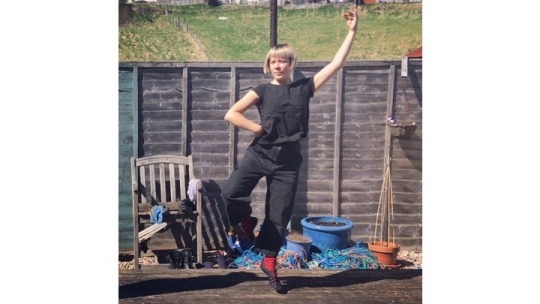
To help with my learning, I made visual scores of the dance, replacing arm positions with red deer antlers, and human foot fall with red deer tracks in a notation of the steps. I also began to experiment with blind debossing, inspired by seeing the tracks in the snow.

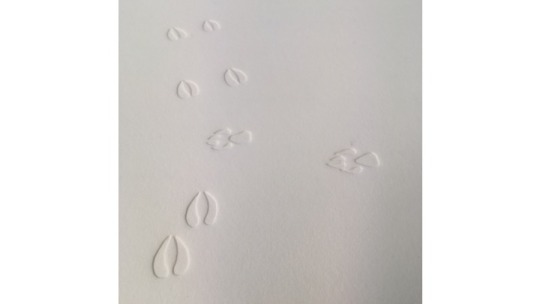
Romanticisation aside, learning the Highland Fling, I could understand why the story of deer imitation stuck. While dancing with deer in mind, the arms, when held high, felt like antlers. The steps, such as toe and heel, backstep and rocking were delicate and deer like, yet powerful and athletic. Two of the steps sheddingand last shedding seemed even to reference the stag's antler shedding, which happens once a year. I could imagine that if a dancer of the Fling performed well, it might make them feel powerful and elegant. I wondered how it might feel to perform this dance if I were a man?
Sonora Desert, Arizona and Mexico...
The indigenous Yaqui, or Yoeme tribe are originally from Sonora in northern Mexico. Seeking refuge from persecution by the Mexican Government in the 19th and early 20th centuries, some of this community were forced north of the border. Their descendants in the USA call themselves the Pascua Yaqui, and in 1978 they were finally recognised as an official tribe. Today, the Pascua Yaqui have eight communities in Southern Arizona.
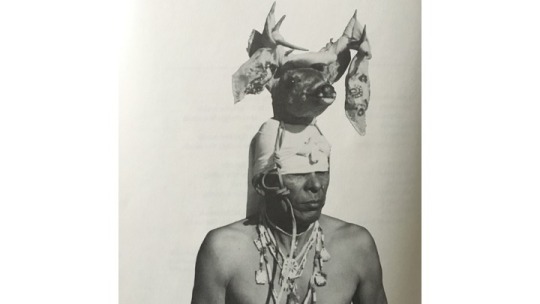
The Yaqui Deer Dance is a small but important element in the modern Yaqui ceremonial cycle, a ritual involving dance, music, pantomime, and poetry, in a complex blend of catholic and indigenous beliefs. Yaqui traditions speak of the Deer Danceonce being part of a rite performed before the hunting of the deer, but today that connection is only a memory.
Supported in part by the University of Arizona Poetry Centre, in March 2018, I went back to Arizona to begin to make connections with the Pascua Yaqui community. I met with Larry Evers, who co-authored the book on Yaqui Deer Songs mentioned earlier. He was about to retire from his role as a professor between the English and American Indian Studies departments at the University in Tucson, and when I visited, he was clearing out his office. Generously, he gifted me a pile of books and papers on Yaqui culture, as well as a set of DVDs with hours of footage of a Deer Dance ritual performed in Mexico in 1976. Of particular relevance to my research was an old type-writer written thesis, in which the writer Susan Burton explores the relationship of the Yaqui Deer Dancesteps to the movements of real deer and, using the 1976 film footage, notates the dance's vocabulary with labanotation.

Larry was excited by my research, though warned me that I would have many boundaries to cross. Firstly, my gender – the Yaqui Deer Danceis strictly a male domain – and secondly, my ethnicity as a white European. As with many First Nations people, the Yaqui tribe have been consistently ill-treated by various outsiders throughout history, from the invasion of the Spanish Jesuit missionaries and the Mexican Government's persecution of indigenous tribes, to the early American anthropologists misquoting traditions, and the US authorities' mistreatment of anyone who is not white. Understandably, the Deer Dance, and Yaqui culture more broadly, is rarely discussed outside the community.
I was readying Donna Haraway's book 'Staying with the Trouble' and the following passage resonated:
"Indigenous peoples around the earth have a particular angle on the discourses of coming extinctions and exterminations of the Anthropocene and Capitalocene. The idea that disaster will come is not new; disaster, indeed genocide and devastated home places, has already come, decades and centuries ago, and it has not stopped. The resurgence of peoples and of places is nurtured with ragged vitality in the teeth of such loss, mourning, memory, resilience, reinvention of what it means to be native, refusal to deny irreversible destruction, and refusal to disengage from living and dying well in presents and futures."
I wondered if it was possible to foster a meaningful dialogue and cultural exchange? To open up possibilities, Larry put me in touch with his long-term collaborator Felipe Molina, a Yaqui tradition bearer, teacher and translator, from Marana, Arizona. We exchanged emails and, though Felipe was interested in my research, he was too busy with his Easter commitments as a Deer Singer. We agreed to be in touch again later in the year.
During the Easter ceremonies, the Yaqui Deer Danceis held on two occasions, at the Pahko– an all-night Fiesta – and then again on Easter Saturday. Seeking permission to attend these, I contacted Daniel Vega from the Language and Culture Departmentof the Tribal Council at the Pascua Yaqui Reservation. At our meeting, I explained how I was exploring the imitation of deer across cultures in order to better understand their relationship to ecology and, sharing a little about my research so far, I was delighted when he showed a particular interest in hearing about the Abbots Bromley Horn Dance. He explained that the Yaqui tribe perform their various ceremonies as healing rituals, not just for the Yaqui, but for everyone around the world, so, if I went with respect, I was welcome to attend the Easter ceremonies at Old Pascua– the old village in South Tucson. He warned me not to take photos, make sketches or any recordings – this was strictly forbidden – and that I had to keep my cell phone out of sight.
Not quite knowing what to expect, on Friday evenings I began to attend the Lenten ceremonies, participating in the processions of the fourteen Stations of the Cross, following the various church groups who sang and prayed at each of the crosses positioned around the Old Pascua village. Also partaking in the processions was a ceremonial group called the Fariseos, who are said to represent those who persecuted Jesus. Within this group were the Chapayekas– masked figures who symbolise evil. One of the Chapayekas'ritual functions is to deride the procession and distract the church groups by silently mocking them, beating time with swords and daggers, and shaking the deer hoof rattles around their waists and moth cocoon rattles on their ankles. My initial reaction was to laugh at their pantomime-esque performance, but as the sun went down and the procession continued in darkness, they really felt quite sinister. I soon discovered that it is taboo to stare too closely at a Chapayeka.
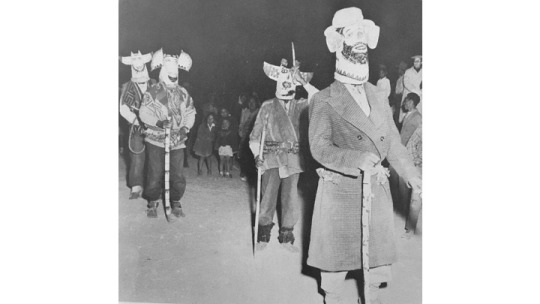
On Palm Saturday, I attended the Yaqui Pahko. Though I'd read so much about it, nothing could quite prepare me for the experience of this multifaceted, powerful night-time ritual. Approximately two hundred performer-participants, divided into about twelve groups, each with a distinct role and music, carried out ritual processes and costumed dances representing the various overlapping forces of good and evil. There was only one Deer Dancer though; at the Ramada, a structure symbolising Huya Ania (the wilderness world), the Maaso(the deer dancer) emerged as a timid fawn and, dancing alongside the Pahkola(a group of clown-like animal-esque figures), he slowly grew into a virile adult male through the night, before predicting his own death and concluding his dance as an animal spirit.

During a break in the ceremonies, I chatted with someone I'd met in the 'audience' who made a striking observation about how the Maasoalways has his torso tilted forwards, like the enigmatic Palaeolithic ‘sorcerer’ cave painting of the Trois-Frères caves in Southwestern France. I hadn’t made the connection before, though I had stuck an image of the ‘sorcerer’ in my sketchbook. The visual similarity is uncanny – was this how humans become-with-deer?
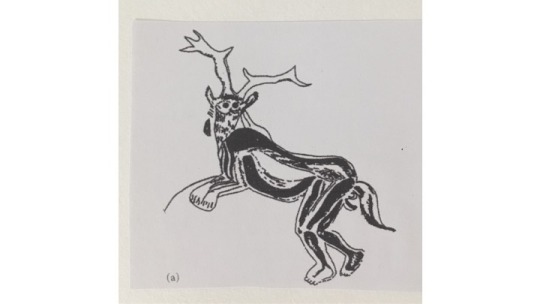
A similar sequence of Deer Dances took place on Easter Saturday, another complex, multi-layered ceremony, where, in a battle against evil, the powers of the more-than-human world were harnessed. Dancing Matachiniswore flower streamers in their hats, processing Angels waved branch-switches in the air, trickster Pahkolas wore animalesque masks, and, the Maaso (Deer Dancer), in his final dance, charged at the Fariseos, threatening with his antlers. Finally, when evil was defeated, the Fariseoswere ritually ‘killed’ by 'flowers', symbolised by paper confettithrown at them, and a straw ‘Judas’ was burned in a fire, along with all the Chapayekamasks and swords. Bells rang out from the church and celebratory music was played. With so much colour and joy, I felt like I never wanted to brush the confetti out of my hair!
In a closer examination of the Deer Dance itself, the combination of the dancer's movements and costume seems to span a spectrum of mimesis, from iconic deer imitation to something more stylised. The deer's headdress enhanced the sudden sharp-to-still deer-like movements of the head; soon enough, I found myself watching not the dancer's eyes, but the deer's eyes, partially hidden beneath the cloth. The long line and tension of the tilted torso suggested a deer's back, and the white cloth joining the dancer's head and deer head gave the impression of a deer's neck and shoulders. The flexed feet were reminiscent of the animal's hind legs, while the gourd rattles suggested the front legs, the movements of which gave the impression of a deer's speed and agility. The footwork itself – the choreographed steps – seemed less iconic and more stylized. I wondered if I would be able to meet and learn from a dancer some time...
The dance is traditionally accompanied by three musicians who sing and play instruments: the hirukiam,notched rasping sticks resting on half-gourd resonators said to represent the deer’s breath or the scraping of the antlers against the brush, and the ba’ abweha’i, a water drum made from a half gourd floating in a bowl of water, representing the heart-beat of the deer. Sitting on the floor during the dance,I could feel the vibrations of the water drum in my chest, and I imagined that the dancer might be tuning his heart into a deer's heart beating.
The songs accompanying the dance, are sung in Yoem noki(the Yaqui language) and describe the Maaso(the deer) and his encounters with other animals, birds, insects and plants, especially flowers, which hold a spiritual significance. The Yaqui believe that there is a close communication between all the inhabitants of the Sonoran Desert, which they call Huya Ania. This could be translated as 'wilderness world', but it is worth pointing out that the word 'wilderness' here, does not mean a "neglected, uninhabited, or inhospitable region" like it does in the Oxford Dictionary, but a living, connected community. This ecology of the Sonoran Desert appears in the traditional songs, which become like scores, or a script to the dancer who, as the deer, also becomes, for a moment, the badger that is being described, or the hummingbird, or the mountain lion.
Later that Summer, I returned to meet with Felipe and, over a number of meetings, learned more about the dance. We shared our perspectives and he generously answered my sprawling questions, teaching me about aspects of Yaqui culture, including some Yoem nokiwords. Felipe explained how the Deer Dance was a way for people living in the city to connect with Huya Ania (the wilderness world) and Sea Ania (the flower world), and as he described how the songs are lessons for listeners to learn about ecology and Yoeme ancestors, I began to think of the Yaqui Deer Dance as a form of activism.
I was honoured when Felipe invited me to give a talk to his students, a class of young Yoeme adults, who were learning about their culture at the Yaqui tribal chambers on the reservation. I shared a little about my work with vernacular traditions, specifically Scottish Highland culture and language, and about the history of the repression of Scottish Gaelic and the current resurgence of the language. It was good to hear Yoeme perspectives. Though the Yoem Noki language is under threat of dying out, people like Felipe are out there doing the work of preserving and passing on knowledge.
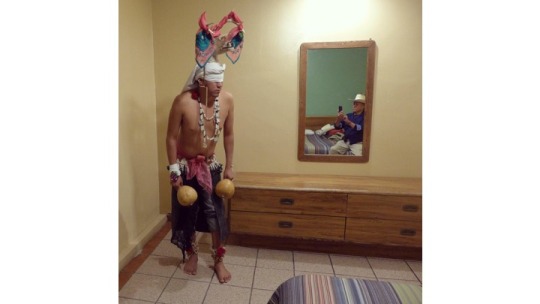
Felipe and I began to make plans to visit a Deer Dancer in Mexico later in the year and, in November, over a number of days, we went back and forth by foot across the Mexico-USA border, to work with Indalecio ‘Carlos’ Moreno Matuz, a young Yaqui Deer Dancerfrom Vicam, Sonora, in the Yoeme homeland. We worked in Carlos’ hotel room, where I interviewed him and learned about the physical and symbolic aspects of the dance through demonstrations and diagrammatic drawings, while Felipe translated from English to Yoem Noki and back again.

Felipe and Carlos explained that the dance had only ever been performed by men because they were the ones who traditionally went hunting. Interestingly,the deer behaviours imitated were less about the bravado and display associated with the rut, and more about alertness and agility as a form of defence. This corresponds with the fact that in Yoem Noki, there is no word for 'buck' or 'stag'; Maasosimply means 'adult male deer', though his other song names are displayed here. The only time the Maasodisplays aggressive behaviours, such as charging or threatening with lowered antlers, is when he is being attacked or provoked by other figures in the ceremonies.
The white-tailed deer – and coues-white-tailed deer – live in areas of the Sonoran Desert – a land that rambles over 320,000 km, across two countries. It is home to about 130 species of mammals, more than 500 kinds of birds, 20 amphibians, 100 or so reptiles, 30 native freshwater fish. There are perhaps as many as 2500 native species of plants and 4000 in total. It is also home to at least 17 Indigenous cultures as well as many others who have adopted it.
The tribal lands of the Yaqui have been irreversibly damaged, initially due to the European invasion and colonisation, and latterly by the rapid growth of capitalism and climate change degrading the ecology. Along the Yaqui River in Mexico, eight tribal villages have no water due to drought and the actions of agricultural corporations and, every year, people battle with wild fires caused by rising heat levels and invasive grasses spread by cattle. Although the culture of the Yaqui Deer Danceis being preserved, the ecology of the wilderness world is seriously under threat.
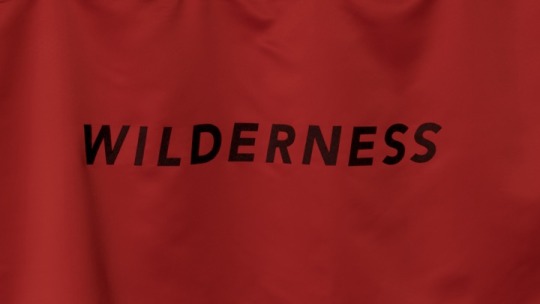
Wild-deer-ness
Throughout the process of exploring these dances, I considered how a body of work might emerge from my research. By conjuring the antlered male deer, the dances evoke images of wild nature, but I realised there is a disconnect between what is encoded in their movements and the reality of local ecology. I was also acutely aware of the striking relationship between our cultural perceptions of 'wilderness' and ideas of 'masculinity'.
How could I honour these folk traditions and histories, yet simultaneously critique and de-stabilise constructed problematic narratives? How could I address contemporary intersections of ecology, gender and class? How could I touch on the complex relationship between indigenous cultural knowledge and the appropriation of vernacular culture? What did I want to explore and communicate?
I spent time writing, thinking, dreaming and in my note books began to distil my research into words:
From Palaeolithic cave paintings, to Landseer’s Monarch of the Glen, throughout time, artists have made representations of deer. Whether as staples to hunter-gatherers, icons of power and empire, or the focus of sport, deer have long been central to human cultures.
In popular imagination, deer remain etched into people’s consciousness as emblems of the 'wild' – the word wildernessitself, derives from the Old English wilde, wild, and doer, deer – and our relationship to the idea of wild-deer-nesshas shaped the landscape. Transported across continents, some species, such as fallow and sika deer, transformed ecologies with the establishment of royal deer forests and parks – hunting grounds belonging to the Crown. Other species, such as the reindeer of the arctic tundra and white-tailed deerof the Sonora desert, face threats of habitat loss caused by climate breakdown. In Scotland, the overpopulation of red deer due to human made environmental change impacted greatly on the degradation of Caledonian pinewood ecology.
And so, it follows, although they are perceived as powerful, deer also embody vulnerability. Constantly alert to the threat of a hunter or predator – or the ‘ghost’ of an extinct predator – they inhabit vulnerable places. It could be said that deer do not live in wilderness, but in ghosts of places that no longer exist.
Across timescales and cultures, our relationship with deer as a totemic and ideologically powerfulanimal has contributed to a construction of wilderness as an imaginary landscape, setting 'nature' apart from 'culture'. Is it possible to shift our relationship to the world and renegotiate these dichotomies?
The dancers at Star Carr, the Abbots Bromley Horn Dance, the Yaqui Deer Dance and the Highland Fling are separated by geography and time, yet there is a commonality in these seemingly disparate cultures, which find echoes throughout history, fromthe ritualised carrying of stag heads condemned by medieval European church leaders, and Herne the Hunter, the antlered ghost of a royal gamekeeper in English folklore, to the Tibetan stag-headed Chamdance and Shishi-Odorideer dance of Northeast Japan.
Evolving over generations, each dance is mimetic in some way, with movements that imitate male deer behaviour and gesture, from the frolicking of the fawn and the alertness of the adult male, to the bravado, display and aggression of the rutting stag.Costumes also play a significant role, and often, but not always, feature elements of attire made from animal parts. Another common feature is that they are (or were) traditionally performed by men and, with their displays of muscular strength and athletic endurance, they are all thought to have their origins in (or associations with) hunting ritual practices.
As traces of hunting rites, how are these dances to be understood within a contemporarycontext?
How does the mimesis of male deer behaviours inform a 'performance' of masculinity by male dancers? What are the implications of these gendered performances in society today?
Returningto the animal tracks that obsessed me, back in the studio, I finished scoring the three deer dances I had studied, tracking the steps of the dancers, replacing human foot-prints with deer hoof-prints: red deer for the Highland Fling steps, white-tailed deer for the Yaqui Deer Dance steps, and reindeer for the Abbots Bromley Horn Dance steps. Working with Edinburgh Printmakers, I developed these into a series of blind debossed prints.
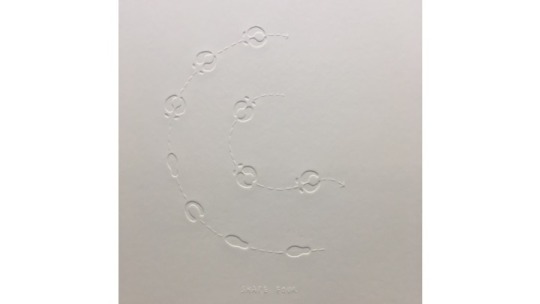
Becoming-with-deer
Considering different approaches to choreograph from the scores, I decided to draw upon the most mimetic aspects of what I had learnt and adopt fragments of steps to make something entirely new. But who would perform this? Drawing on multiple layers of my research, I began to conceive of a series of characters, each one a constructed assemblage of aspects drawn from a male-deer/male-human spectrum, playfully dissolving human:animal binaries. Making sketches of these figures, I gave each of them names borrowed from archetypal male characters found within traditional theatre, as well as deer and deer stalking terminology: monarch, warrior, young buck, fool and old sage.
To get to know them with my body, I decided to attempt to become each deer-man myself. By queering these figures, I hoped to challenge our constructed ideals of masculinity and question the mythologies that give authenticity to gendered behaviour. Having experienced some of the more negative and toxic behaviours of the heroic-hetero-male in my day to day life – let's call this thecrisis of masculinity– I also wondered if, by becoming these characters, I could release myself from their impact on me as a queer woman, and simultaneously bring to the foreground the impact of these behaviours – the crisis of ecology– on vulnerable and damaged habitats.
My plan became to create a moving image and sound work, performing each character in a choreography-to-camera. I began to collaborate with two performance artists: Peter McMaster and Will Dickie, who both practice at the intersection of live art and dance, and whose past work had, in various ways, explored tropes of masculinity, ritual and ecology. Peter collaborated with me on the film's dramturgy and Will became the movement director, helping to devise the choreography. Together, we discovered and developed the characters.
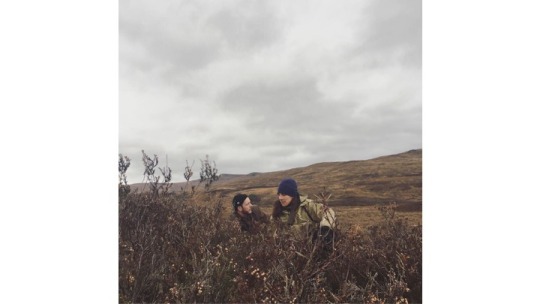
To begin our process, in October 2018, we spent a few days at Trees for Life, workshopping ideas and watching deer. We also went out deer stalking with Allan. This time I was very sensitive to his movements, almost reading him as a dancer, and was struck by the ways in whichhe took on qualities of the animal of the hunt, harnessing deer-perspective.Like the deer, he was quick to register distant movements and sounds and, on getting close to the animal, to remain hidden, he tilted his torso with bended knees, a pose strikingly similar to the Yaqui Deer Dancer's basic posture and cave painting of Trois-Frères.Will made an interesting observation about how the deer stalk appeared to be carried out in clearly defined ritualised stages. Beginning casually, walking upright and chatting, we slowly grew tighter as a pack, becoming quieter and more focused, tuning in to our surroundings and, as we drew near to the deer, we got close to the ground, not moving or making a sound, our bellies up against the heather. Before taking a shot, Allan spoke about a moment of stillness – a stillness of breath and of thought.
In a similar way, each dance that I had been studying, sat at a different stage in the ritualised drama of the hunt: the Yaqui Deer Dancetraditionally took place before hunting, allowing the hunter to access the perspective of the deer; the Highland Flingwas a dance of triumph, a dance to feel powerful and in control; and the Abbots Bromley Horn Dancewas a celebration after the hunt, to give thanks. With gestures that ranged from iconic imitation to stylized metaphor, these rituals of the hunt were clearly mimetic of the rituals of the deer rut. But how could the dramaturgy of my film address what felt urgent to me: the interconnections between the crisis of masculinity and the crisis of ecology? We slowly began to realise that if Deer Dancer was to function as a ritual space, perhaps the characters would have to stalk each other to the death...

Early the following year, Will, Pete and I worked together to discover the five characters from the inside, developing their movement vocabulary and training exercises and, as we explored the relationship between them, a story emerged. I began to conceive of a two-channel film and sound work that would play with, and attempt to destabilise narratives found both the within anthropology documentary and wildlife/nature documentary. To prepare for the filming process, I created a story board for the two screens, and composed and recorded a multi-layered vocal composition to perform to.
Utilised technology to 'extend my body' and expand my vocal range into 'male' and 'stag' pitches, I worked with my voice to imitate drum sounds. Recalling my experience of the Yaqui water drum, and the Abbots Bromley Horn Dancetriangle, my intention for the sound was to affect the viewer-listener on a body level, sometimes in a way that is unsettling, at other times like a heart-beat of low vibrations in the chest or belly. Alongside the process of developing the characters physicality, and the vocal score, I began to design and make the costumes and props, with invaluable assistance from my partner Lydia Honeybone, using an assemblage of materials, from ribbons and sequins, to bullets and hunting horn. I also worked with naturally cured deer hide, hooves, antler and skull, specifically for the cod pieces, and the weapons, hinting at the relationship between the posturing of male sexual bravado and violence.
We filmed over three days in Glasgow University's theatre against a black curtain. My director of photography Andrew Begg lit the space, and followed the story board shot by shot, filming each character one by one, then, in post-production, with editor Laura Carreira, I then pieced together the jigsaw puzzle.

Introducing the characters...
The Monarch is a mature, dominant male, who holds his head high, displaying his sixteen-tine crown and enlarged neck. Over his hide, he wears gold. His stance is wide and a bulbous codpiece with tassels enhances his majesty. Belling loudly, he asserts his authority, warning off rivals to his harem of hinds. But he's growing old and his limbs are becoming stiff. Soon he'll be past his prime.

The Warrior is highly alert, his senses tuned into his surroundings. He tracks and hunts, defending himself on attack with antlered spears that extend from his shoulders. He's in his physical prime; his chest is hard and strong and over his tartan loins, he wears a sporran and bullet belt. When he hears his rival, he sounds his horn, displaying his power.
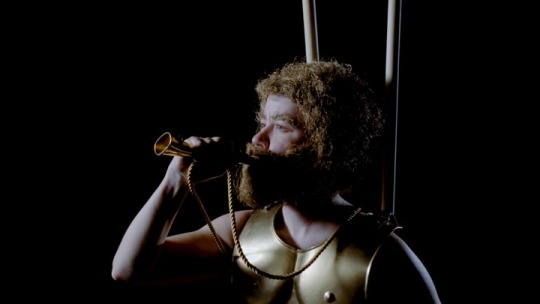
Though the Young Buck has reached sexual maturity, he's still a spiker, yet to win his own harem. But he's looking. Dressed in tweed trews and protruding codpiece, he taps the ground, addressing potential rivals. He is lustful, cocksure and trigger-happy, challenging anyone in his close proximity. Breathing heavily, he's on the hunt for a hind, on the hunt for a fight.

The Fool, small in stature, avoids the dominant males as they proclaim their authority during the rut, bawling and displaying his white behind in fear. Wearing ribbons, bells and a modest codpiece, he carries a broom with antlers, a hobby stag that appears to push and pull him into combat. Haunted by ghosts, this skittish staggard is bewildered by his own inner conflict.
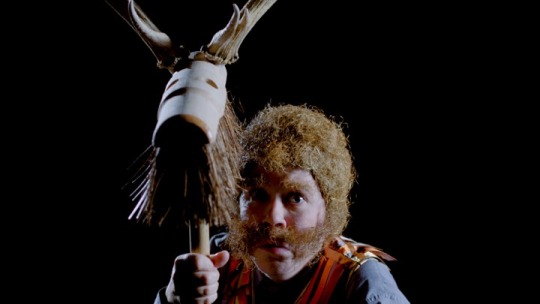
The Old Sage is a spirit of the wild hart and ghost of a man. Haunting the wilderness with skull and ragged horns, he relives his life tending the land with hooves and hands. He also relives his death. Only perceived by a few, he sees all.
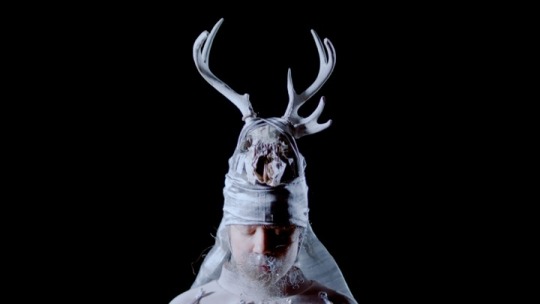
Deer Dancer
In the resulting work, the costumes, movements and music work together to tell a story, with the visual scores acting as hidden keys to the work. In the 'pop up theatre space' of the gallery, we meet the five characters in an imaginary wilderness world. This wilderness world is not rooted in a particular ecology, but is place-less, black and empty, allowing the viewer-listener to construct and project their own wilderness into the space.
A dynamic emerges between these deer men, and slowly they begin to stalk one another.Then, in a face-off, they lock eyes, take a bow and the deer dancecommences. With movements that signify both the deer rut and a pre-hunt ritual, the characters face one another, performing their ritual dance, with fragments of steps from the three dances. In the visual scores, these steps are delinieated in gold foil on the debossed tracks – interestingly, the word 'foil' also means 'animal track'.

Then, coming to a stop, one by one, the deer-men draw their weapons, and we see each one lying in their death pose, with blood flowing from their body, signified by slow moving red ribbons. As bodies disappear (or decompose), the costumes remain as relics of culture to be performed again. Bit by bit, they too disappear, until then reappear on my body, piece by piece, reconstructing each character in a queer assemblage. And then it begins again...
Stuck in a perpetual loop of learned behaviour and appropriation, these stag-men are ultimately condemned to self-destruct. Humankind has left a footprint so deep that we are only now beginning to grasp the immensity of the calamity. In a small way, I've come to think of Deer Dancer as a contemporary life-crisis ritual for a damaged planet. But when the balance has been set right in ritual, the question becomes how do we really address the damage?
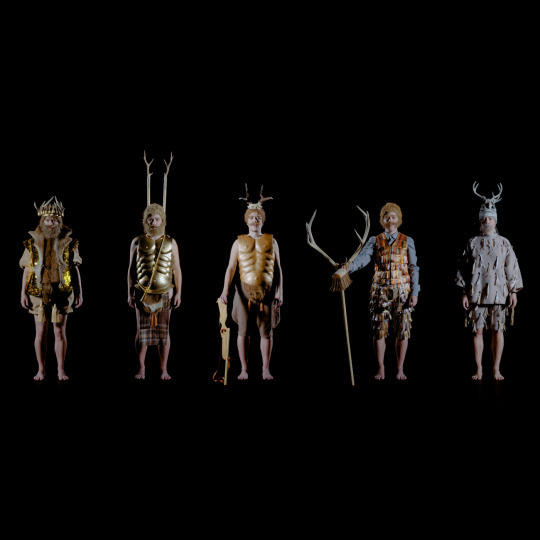
This text was originally written and presented as a talk at Edinburgh Printmakers in September 2019, to accompany Tuulikki’s Deer Dancer exhibition.
Deer Dancer credits: Performed & directed by Hanna Tuulikki; Character development and choreography by Will Dickie, Peter McMaster and Hanna Tuulikki; Dramaturgy by Peter McMaster; Movement direction by Will Dickie; Sound composed and recorded by Hanna Tuulikki; Sound mixed with Pete Smith; Director of photography by Andrew Begg; Edited by Laura Carreira; Costume fabrication assistance and wardrobe management by Lydia Honeybone; Production management by Amy Porteous; Costumes and print works by Hanna Tuulikki
Developed through conversations and interviews with tradition bearers and academics, Felipe Molina (Yaqui tradition bearer/ translator), Larry Evers (American Indian Studies, The University of Arizona), Jack Brown (Abbots Bromley Horn Dance tradition bearer/ historian), Doug and Joyce Gilbert (Trees for Life); by observing a number of dances and participating in rituals, including the Yaqui Deer Dance (Pascua Yaqui Easter ceremonies, Old Pascua, Tucson, Arizona, March 2018), Abbots Bromley Horn Dance (Abbots Bromley, September 2017/2018); and direct learning with Sandra Robertson (Highland Fling), Indalecio 'Carlos' Moreno Matuz (Yaqui Deer Dance), Gary Faulkenberry (animal tracking, March, July 2018), Allan Common (deer stalking at Trees for Life, Dundreggan, autumn 2017/2018).
Commissioned by Edinburgh Printmakers, funded by Creative Scotland. Research and development supported by Magnetic North's Artist Attachment, funded by Jerwood Foundation and Creative Scotland. Additional support from Hope Scott Trust, The Work Room, University of Arizona Poetry Center, Trees for Life, University of Glasgow, Glasgow School of Art, and CCA: Centre for Contemporary Arts, Glasgow.
19 notes
·
View notes
Note
i would love to hear abt your rococo lll
Oh my gosh, you lovely human, settle in. This production is my Ultimate Theater Pipe Dream and I apologize in advance for how little chill I’m going to have as I explain it.
Are you ready?

I want to start with my standard disclaimer: I am a theater artist, not a literary critic or a historian. When I’m directing a play, I extract fragments of lit crit and historical fact as I need them and leave the rest on the buffet line. This LLL in particular requires me to play fast and loose with history, so be prepared for a truckload of anachronisms. They make the vision work!
So, with that…
The sad Catch-22 of my Rococo LLL is that no theater will ever put it up: a smaller, indie, risk-taking theater wouldn’t be able to afford the astronomical production costs of casting the 20 actors I need, to say nothing of building opulent sets and period-accurate costumes that imitate the royal courts of the late 18th century; conversely, a large, well-funded, regional theater wouldn’t be able to justify funding a 2.5-hour Shakespeare retelling that turns one of his most sparkling comedies into a dark, violent allegory about the French Revolution and casts young, privileged, light-skinned European elites as the tragic heroes brought low by proletariat Jacobean reform. Even as I type these words, I realize how irresponsible an investment that would be. My Rococo LLL is not the kind of classical theater we need in America right now. It is retrograde in terms of diversity, equity, accessibility, and social justice. It probably says something terrible about me that I even dreamt it up in the first place.
And yet.
I want to direct this production so badly it feels like I’ve swallowed a piece of the sun. If I had all the proper resources (time, money, venue, artists, designers, marketing, etc.), I would do it tomorrow. It’s my baby.
Here’s a blurb that kind of nutshells it all together:
July 1789. King Charles VI of Navarre has died, leaving his son, young Ferdinand III, to take the throne. On a tide of Enlightenment idealism, King Ferdinand commissions his three best friends to join him for a period of ascetic study at the court of Navarre. The rules are simple: no luxuries, no alcohol, and no women. For three long years.
The boys’ oath is immediately put to the test when four young ladies arrive in Navarre on a diplomatic mission from Versailles. Led by the spirited Duchess d’Albret, the Frenchwomen and their mile-high coiffures prove irresistible to the King and his companions. With the help of a motley band of scholars and servants, they set out to woo the Duchess and her friends. But when sober news arrives from Paris, will young love be enough to rewrite history?
Set against the glittering backdrop of the last golden days of the ancien regime, this bold reimagining of Shakespeare’s beloved comedy invites us to look at the most famous revolution in Western history through the eyes of the young elites who learned the truth about privilege just a moment too late.
Of all the radical things I want to do with this production, the thing that would probably cause the most controversy (and earn me a reputation for being a narcissistic, pessimistic, Shakespeare-desecrating hack) is my addition of a prologue set in Paris in June 1793. I could try to sum it up here, but honestly I think it would be a lot more effective and comprehensive just to post the excerpt from my script:
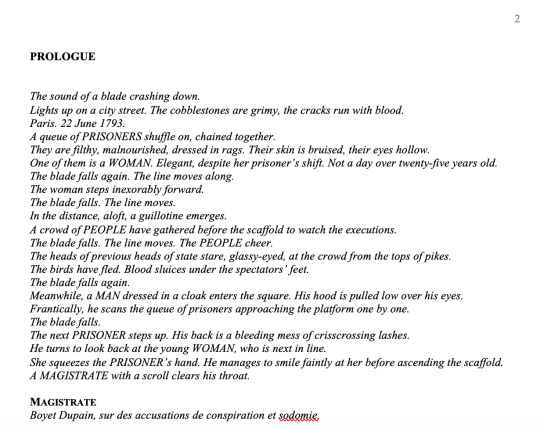


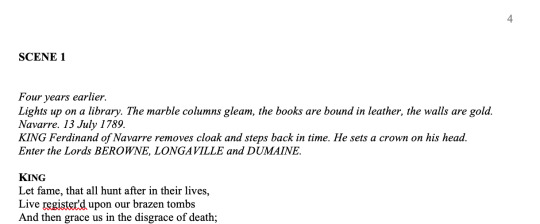
…etc.
So basically, half my audience will vomit due to the unexpected onslaught of blood, gore, and violence…and the other half will vomit from the sheer anti-progressivism of the show’s politics. And I don’t blame anyone who finds fault with this production concept. On a political level, I find fault with it. Arguably the last thing our society needs right now is a Shakespeare production that paints young, pale, overprivileged trust fund babies as the poor, helpless victims of a liberal-led revolution for social equality.
But at the same time, I can’t help but think that the entire point of Love’s Labour’s Lost is to make us look hard at our own privilege and ego, and weigh those things that seem sooo valuable against the true gifts of love, empathy, friendship, generosity, and kindness.
“This is not generous, not gentle, not humble!” Holofernes cries as the Crazy Eight—high on adrenaline and their own cruel wit—jeer him off the stage during his performance as Judas Maccabeus in 5.2. More than any other, this moment epitomizes the value of setting LLL in a sex-charged, champagne-fueled, pastry-laden, cream-filled, lace-drenched, satin-covered, feather-topped, Rococo landscape. There’s no way in hell the audience is meant to sympathize with the insult-flinging prep school Kens and Barbies when they humiliate Holofernes to the point of tears. Shakespeare is way too smart for that. In the final whimsical moments before the messenger Marcadé comes onstage, laden with the news that is going to change the entire genre of the play, the Bard turns a critical spotlight on the young people we’ve been rooting for since Act One, Scene One and invites us to view them—for the first time, really—through the lens of the hardworking, lesser-privileged plebs of Navarre. The portrait is revolting. However witty, cultured, and elegant the courtiers might seem, they clearly have a lot more homework to do. Marcadé’s arrival a few short lines later is the final test of their youthful ego. Is being clever worth the price of experiencing love? Is love worth the price of responsibility? Is she brave enough to admit that she’s scared to take up the mantle? Is he brave enough to give up the one person who matters for the sake of the people he once mocked, the people he now must lead?
I don’t believe the Navarre Nerds and Les Filles have survived the centuries because they end the play as sharp-tongued, entitled, and self-absorbed as they behave at the start. We wouldn’t still be making and remaking this play if the protagonists were so static. I think the young people of LLL resonate with us—or, at least, they resonate with me—because in the course of Shakespeare’s plotless little play they grow up right before our eyes. King Ferdinand learns that he can’t bury his head in his books and ignore the responsibility of ruling when he watches the love of his life choose duty to her country over the desires of her own heart. The Princess learns that the cost of being the cleverest person is human connection when she finds herself laughing alongside Ferdinand at the antics of the Nine Worthies and somehow feels happier than she ever did when she was mocking him into the earth. Berowne learns that love wins every argument: against wit, against intellect, against bachelorhood, against willpower itself. Rosaline learns that love is strength, not weakness, and that she is stronger when she allows herself to feel. Dumaine learns that love demands vulnerability. Katherine learns that love is not a game. Longaville learns that love thrives on honesty. Maria learns that love takes courage. When the Crazy Eight say their heartbreaking goodbyes at the end of 5.2, they no longer care about sounding smart or superior; in fact, they speak against their own intelligence. The erudite Ferdinand trips over his words, the cynical Berowne invokes romantic idealism, the boastful Dumaine speaks with humility, the shy Longaville puts all his cards on the table. The women are no less altered. I don’t want to fall into the trap of ascribing an easy, one-size-fits-all moral maxim to LLL, but what else are we supposed to take away from this play if not the fact that we fucking owe it to ourselves as a species to set aside our stupid pride and say, “I love you,” when we feel it because we never know when time is going to run out? What else are we supposed to feel if not pride in these young people for choosing to step up and take responsibility when they hear news that the world outside is ending? That there may be no world left? Les Filles go with their Queen. The Nerds rally around their King. They choose fidelity to their respective kingdoms over the indulgence of love. But they also learn to value love for what it is, and to call it by name…even if that love can only last for a few fleeting seconds:
“If this or more than this I would deny,To flatter up these powers of mine with rest,The sudden hand of death close up mine eye.Hence ever, then, my heart is in thy breast.”
(King Ferdinand, V.ii)
As the Crazy Eight grapple in real time with the consequences of Marcadé’s message and what it means for their role as leaders in society, Rosaline gives Berowne a task to complete in their year apart that practically hums with poetic intelligence. Her lines are so iconic, we still quote them colloquially today:
BEROWNETo move wild laughter in the throat of death?It cannot be, it is impossible.Mirth cannot move a soul in agony.
ROSALINEWhy, that’s the way to choke a gibing spirit,Whose influence is begot of that loose graceWhich shallow laughing hearers give to fools.A jest’s prosperity lies in the earOf him that hears it, never in the tongueOf him that makes it. Then, if sickly ears,Deafed with the clamors of their own dear groans,Will hear your idle scorns, continue then,And I will have you and that fault withal.But if they will not, throw away that spiritAnd I shall find you empty of that fault,Right joyful of your reformation.
(V.ii)
I think this is the moment when I would start crying if I ever watched my Rococo LLL performed live. Because of all les Filles, I think Rosaline is the only one who knows that by choosing to accompany the Duchess back to Versailles at the end of LLL, she is effectively signing her death warrant. The Jacobeans and sans-cullottes are not going to want young, eligible, Catholic Rococo princesses wafting around their new, secular state. The guillotine may not yet exist in the summer of 1789, but the there is a thirst for blood and Rosaline can smell it. And now Bastille has fallen. Paris is on fire. King Louis XVI has months to live. The world will never be the same. Rosaline’s once-ordered, once-gilded country is careening into a bloody nightmare of soured ideals and ruthless social weeding, and even though she can’t see the future, she can read men like books. Even Berowne. Even the charismatic nihilist who earned a bachelor’s degree in bachelorhood and tried to hide his heart under a bushel. She can read him and she can save him. They can’t kill her husband if she doesn’t have one.
Rococo LLL? I don’t know. It’s a pipe dream.
But can’t you picture it?

Tagging my girls @harry-leroy @suits-of-woe @lizbennett2013 @dedraconesilet @exeunt-pursued-by-a-bear @henriadical in case anyone is interested :)
Thanks a million for one of my favorite asks ever! Happy holidays, friend!!
xx Claire
31 notes
·
View notes
Note
oh, you're a "historian"? name everything that's ever happened
The history of all hitherto existing society is the history of class struggles. Men make their own history, but they do not make it as they please; they do not make it under self-selected circumstances, but under circumstances existing already, given and transmitted from the past. The tradition of all dead generations weighs like a nightmare on the brains of the living. And just as they seem to be occupied with revolutionizing themselves and things, creating something that did not exist before, precisely in such epochs of revolutionary crisis they anxiously conjure up the spirits of the past to their service, borrowing from them names, battle slogans, and costumes in order to present this new scene in world history in time-honored disguise and borrowed language.
18 notes
·
View notes
Text
Remnant doesn’t use the Gregorian Calendar
No, seriously.
I believe that Remnant does not use the Gregorian Calendar, the calendar system that we use in the Western World today. I believe instead that it uses a modified version of the Julian Calendar, called the Gaelic Calendar.
I believe this is supported both by evidence in the text of the show, by evidence in support materials that have been confirmed to be canonical, and by the fact that it fits thematically into RWBY.
So let’s break this theory down into four parts.
Part 1: A Brief History of Time
The Calendar currently in use in the Western World is the Gregorian Calendar, named after Pope Gregory XIII, who instituted this reform across the Catholic world in 1582. The reason why the Pope changed the calendar is that the previous Calendar, the Julian Calendar, had made the assumption that the year was exactly 365.25 days long. In actuality, it’s 365.2422.
Now, this doesn’t seem like much a difference (especially since the Julian Calendar was introduced in 46 BCE), but by the time Gregory got around to changing things, the Julian Calendar was off by ten days. This was upsetting Gregory because Easter was now happening a week earlier than it should have been, and this was the sort of thing that weighed on the mind of God’s right-hand-man.
Now, this change didn’t really change much. The clocks jumped forward ten days in October 1582, and the rules around Leap Years were changed. The Julian Calendar prescribed that Leap Years happen every four years. Gregory changed that to “every four years, unless the year ends in 00 and is not divisible by 400”. So while the year 2000 was a Leap Year, the year 1900 wasn’t and neither will the year 2100.
This gave the Gregorian Calendar a year length of 365.2425, and it was declared “close enough”. We only lose one day every 3,030 years, rather than the Julian Calendar’s day-loss of one day every 128 years. That’s a major improvement by any measurement.
So what the hell does this have to do with RWBY?
Part 2: Happy BirthdayWeen!
Ruby’s birthday is October 31st, Halloween. In the RWBY Chibi episode “Happy BirthdayWeen”, the date is explicitly referred to as both October 31st and Halloween, and Miles Luna later confirmed that was canon, despite the events of RWBY Chibi being non-canonical.

However, three months after the airing of “Happy BirthdayWeen”, the episode “Nondescript Holiday Spectacular” aired, featuring the Chibi version of our heroes celebrating “Nondescript Winter Holiday”.

Now, while RWBY Chibi is non-canonical, it does make use of canonical information. For example, in the episode “Nefarious Dreams”, it reveals that Emerald sees Cinder as a mother figure, which Mercury confirmed four months later in Volume 6, Chapter 9.


So, the question I ask you is: Why can RWBY Chibi refer to Halloween as “Halloween”, but has to use “Nondescript Winter Holiday” instead of naming a December Holiday, real or imagined?
I believe that this is because Halloween is actually celebrated on Remnant, but a December Holiday is not. And Halloween is very important to the Gaelic Calendar.
Part 3: This Is Halloween
Halloween, despite taking it’s current name from the consecutive Western Christian Feast Day “All Hallow’s Day”, did not start as a Christian festival. Instead, it derives from the ancient Gaelic festival of Samhain, which included many of the same customs as modern Halloween. Bonfires, Apple Bobbing, going from house-to-house in costume and demanding food, Jack-o’-lanterns (made from turnips rather than pumpkins), the works.
It was believed that this was a liminal time, where the walls of the world of the living and the world of the dead where at their weakest. Food was placed out to invite the spirits of the family’s dead relatives in, while masks were worn to scare evil spirits off. There’s honestly some striking similarities to the Mexican custom of Dia De Muertos.
But it wasn’t just a celebration of the dead.
See, the Celtic (and thus Gaelic) day was recorded by Roman historians to be a little different than what we would consider a day to be. The day started at sunset rather than sunrise or midnight, with the “dark half” of the day occuring before the “light half”. Similarly, the Celtic year was divided into a “dark half” and a “light half”.
It is believed that Samhain was a celebration of the end of one year, and the beginning of the next. It was “Celtic New Years”, and additionally the end of the Autumn (Fall) Season and the beginning of the Winter Season. This carried over into the Gaelic Calendar, until the switch to the Gregorian Calendar.
(And yeah, the Gaelic Calendar specifically marks the seasons as sets of three months. February 1st to April 30th is Spring, May 1st to July 31st is Summer, August 1st to October 31st is Fall, and November 1st to January 31st is Winter. This is how the seasons are still taught in Irish schools. This is how I learned the seasons. Let me tell you, it was a culture shock to find out how Americans did it.)
Part Four: The Text and the Themes
So, great idea, but where’s the proof?
Well, I could point you towards the Tale of the Four Maidens. Just like the Gaelic Calendar, it begins with Winter, then Spring, the Summer, and ends with Fall. This is the order used in both the telling by Pyrrha, and the World of Remnant narrated by Ozpin. It’s even the order Pyrrha uses when listing off the seasons at the end of the tale.
Normally, when naming the seasons, you’d say “Spring, Summer, Fall, Winter”. It feels significant to me that RWBY changes the order like that.
I could also point you towards the thematic implications. It’s been said that the Beacon Arc is more a prologue to our heroes’ journey, that the story truly begins at the end of Volume 3 when Team RNJR sets off to Haven. This is symbolized in the story by the transition from Fall into Winter, the transition from one year into the next in the Gaelic Calendar. In fact, due to the fact that Taiyang is bringing Ruby breakfast in bed when he finds her letter, I personally believe that Ruby set off towards Haven on her birthday, October 31st.
Or the fact Fall symbolism is used throughout Volume 3 to symbolise an ending, the literal “fall” of our heroes and Beacon itself. Fall is the time when the leaves die, when animals hibernate, when the crop is reaped and the livestock slaughtered to prepare for the Winter months where nothing grows. Even both of our Fall Maidens, Amber and Cinder, have names that signify death in some way. Cinders are the last remnants of a fire, all that’s left after even the embers have died. Meanwhile, Amber is known as a substance that trapped, killed and preserved small creatures and insects. When Fall finally becomes Winter in the show, it’s a new beginning.
But instead of pointing you towards all that stuff, I’m just going to point you to Volume 2, Chapter 1. In which Ruby says that the Vytal Festival Tournament will be held, and I quote, “at the end of the year”.

The Vytal Tournament very clearly takes place in Fall, rather than the expected Winter (for the Gregorian Calendar year), Summer (for the Western Academic year) or Spring (for the Japanese Academic year, which I personally believe fits RWBY’s timeline best). So the end of the year clearly takes place in Fall. Late Fall, even, as it begins to snow not long after the Festival ends prematurely.
And after all, what better time to hold a festival dedicated to celebrating the end of a war than in the run-up to a celebration of the dead?
Conclusion
In conclusion, due to the evidence the show and supporting materials present, I believe that Remnant follows the Gaelic Calendar and that, as a result, Ruby’s birthday of Halloween is also Remnant’s New Year’s Eve.
Thank you for taking the time to read this, I hope I’ve come across as coherent and convincing.
#rwby#rwby6#rwby3#rwby2#volumes as seasons?#calendar nerdery#i wasn't kidding at the end of my last meta post#yes i have a mild bias because i'm irish#but this makes sense#right?#i learned how to use picture
179 notes
·
View notes
Photo

CARNIVAL AND LENT
Here’s an allegorical painting by Pieter Brueghel titled “The Fight Between Carnival and Lent” (Strijd tussen Carnaval en Vasten). In a 2014 article published in Thinking Faith, Jesuit priest and historian Oliver P. Rafferty writes this about the painting:
In 1559, Pieter Bruegel the Elder painted a splendid representation of the themes discussed above in his ‘The Fight Between Carnival and Lent’. This in itself was a favourite tale of the Middle Ages: ‘The Conflict between the foods of Carnival and Lent’. In Bruegel’s painting, Carnival and Lent joust. King Carnival, on the left hand side of the picture, is rolled along astride a large barrel of beer. His lance is a spit with a pig’s head and other meats, and a pie is on his head as a cap. On the right ‘Lady Lent’ is an emaciated nun pulled along by a friar and a pious lay woman. Her lance is a long wooden paddle with fish, and her head is crowned with a beehive, a symbol for the Church. The order and restraint of the right hand side of the picture is in contrast to the chaos and debauchery of the left. Taken together both sides represent the totality of human experience. At first glance, the Carnival side is the more attractive of the representations; nevertheless, human pleasure cannot last forever, whereas the fruit of Lent is to endure for eternity. Furthermore overindulgence gives rise to sickness for at least one of the characters.
Bruegel’s intention, however, was not to denounce Carnival, nor even to posit that Lent is the better of the two, but rather to suggest that Carnival and Lent are the natural extremes of human experience; each has its own proper sphere, place and season. Life contains both. But our eyes are also drawn to two figures, husband and wife, in the centre of the painting. They do not appear to belong to either Carnival or Lent. Their path is illuminated by a ‘fool’ dressed in costume who carries a light although it is still daytime. Perhaps they represent moderation in the face of the human extremes: models of what we should strive for in life, neither weighed down by asceticism nor given to dissipation. But there is perhaps also a hint that even here all is not well. The lighted path on which they trod is not particularly narrow (Matt 7:14), and the ‘fool’ who leads them appears to be veering towards Carnival – perhaps the ‘natural’ tendency of the human condition.
Painting: Pieter Brueghel the Elder, The Fight Between Carnival and Lent
Kunsthistorisches Museum, Vienna, Austria
20 notes
·
View notes
Text
Kimberly Truhler is a Film and Fashion Historian who has been an expert for entities including TCM, the BBC, the National Film Registry, Christie’s, and the Fashion Institute of Design & Merchandising (FIDM) and was recently featured in CNN’s docu-series American Style. You can delve into the history of fashion in film on her site GlamAmor.com. I am delighted to have had the opportunity to ask Kimberly a few questions about that subject and the upcoming Oscars. I hope you enjoy this as much as I did putting it together.
◊
A: What classic female actors have had the biggest impact on fashion?
K: I think it’s pretty easy to say that actresses like Marilyn Monroe, Audrey Hepburn, and Grace Kelly are style icons who everyone knows, even those not familiar with classic film.
A: What role did the studio system play in the impact of fashion, which was created by incredibly talented designers, who were also just hired hands?
K: Well, each studio had a head costume designer as well as other designers who worked on the productions. MGM had around 150 people working in the costume design department alone. The head costume designers generally came from the fashion industry. Howard Greer and Travis Banton (both head of costume design at Paramount), Robert Kalloch and Jean Louis (Columbia), and Vera West (Universal) all came from couturiers. During the Golden Age of Hollywood, the movies were the biggest influence on mainstream style, so what you saw onscreen became what women would wear in real life.
A: Today all you hear on the Red Carpet is “I’m wearing this or I’m wearing that.” I would think the old Hollywood studios wanted classic stars to pretend to be themselves, make audiences think that they made their own choices. Was that the case? Did designers get the credit in public that they deserved?
K: Crediting designers on the red carpet is a relatively new thing. During the Golden Age, the studio costume designers would also create gowns for the red carpet. It was more about people identifying with a star’s overall style -both on and offscreen – than it was identifying individual designers. The designers were there to support the studios and the stars. They were creating an illusion, a fantasy. That said, certain designers like Adrian had a style signature and people would become familiar with his work on the MGM stars.
A: How much free rein did old Hollywood designers have during the studio system?
K: There was no such thing as free rein. The approval process at the studios – production designers, directors, producers, studio heads – was intense. Of course the stars would always weigh in as well. And then there was the Production Code that was in effect, and costume designers had to work with (and often around) those rules. Often designs had to be pre-approved by those who enforced the Code, and they had the power to veto designs even when studios were in the midst of filming.
A: There were times in our country’s history that influenced Hollywood fashion immensely. The Great Depression and WWII come to mind. Yet, while many actors are political today, I don’t think politics – or where the country is – influences fashion in the same way. Why do you think that is?
K: The impact of the Great Depression and WWII on fashion wasn’t really about politics. During the Great Depression, Hollywood became a place of escape for the country – both in the aspirational visuals and theaters were a physical place to escape to. Costumes onscreen were pure fantasy, such as those on Ginger Rogers in her films with Fred Astaire. WWII was a time where the country all came together to support the war effort. It also was a time when fabric was rationed for everyone, so Hollywood costume designers tried to be conscious of this. There was a combination of designs that worked for every woman – the popularity of pencil skirts are a prime example of the impact of rationing on design – as well as continuing some aspirational glamour for 1940s audiences.
A: Beginning in the 1920s, if you had to choose one fashion trendsetter by decade, who would they be?
K: Wow. That’s almost impossible to answer. I’ll just toss out a few names as examples of actresses who really impacted style, but this is far from a complete list. The 1920s was really like two decades in one – the early 20s and late 20s. Early 20s – Gloria Swanson. Late 20s – Clara Bow. 1930s – Joan Crawford. 1940s – Katharine Hepburn. 1950s – Marilyn Monroe. 1960s – Audrey Hepburn. 1970s – Ali MacGraw.
A: Even a non-fashionista like me recognizes Grace Kelly, Audrey Hepburn, and Doris Day as style icons. Who would you say is not talked about as one, but influenced fashion nonetheless?
K: Well, someone who is way under the radar is Kay Francis. She’s not a ‘name’ that’s known today, but her style can still be seen in fashion.
Kay Francis by Ray Jones (Universal, 1941)
A: Marilyn Monroe. What can you tell me about her style and influence?
K: Marilyn’s star really began to rise in 1953 when she did 3 films – NIAGARA, GENTLEMEN PREFER BLONDES, and HOW TO MARRY A MILLIONAIRE. The last two were examples of her partnership with costume designer William Travilla. Marilyn had an incredible figure (obviously) so he really highlighted that. But he did so without revealing too much. As an example, you’ll notice her “Diamonds are a Girl’s Best Friend” gown only really reveals her shoulders. The 1950s was known for very feminine style (in contrast to the more austere 1940s) and celebrated an hourglass figure, and Marilyn was a perfect model of that. In addition to working with Travilla, she also worked with her makeup artist Allan “Whitey” Snyder who created that iconic look of hers that we all know today. Of course she was also just naturally gorgeous – she never took a bad photo – and had a vulnerability about her that made her appeal to both men and women.
A: Who would you say is the most influential classic male actor in fashion?
K: Cary Grant.
A: I’ve been lucky to attend several of your fashion presentations both online and in person. You’ve mentioned the sad lives and or endings of several of the classic Hollywood designers. Why do you think that was the case?
K: Well each was an individual case, of course. But working in the studio system was intense. I already mentioned the extreme approval process they went through, and this could be really difficult for any designers who may have enjoyed a bit more autonomy designing in the fashion industry. Also the high number of movies that would be in production at any given time – it was a lot of work and all of it was high pressure.
A: You also mention the measurements or sizes of the classic actors as you discuss the history of fashion in film. In fact, I’ll recommend that people visit your GlamAmor.com for those great measurement charts you’ve created. But for today, explain how an actor’s size or shape influenced fashion back in the day and whose “size” would surprise us most?
K: That’s a slightly complicated question. I think we’re talking about two different things – height and measurements. Each era certainly had a silhouette that was popular. The 1930s liked a more lean figure whereas the 1950s wanted a more voluptuous woman. I think it’s the women’s heights that surprise people the most. The petite Veronica Lake at 4’11” or Joan Crawford at around 5′. Then there are the taller actresses – someone like Kay Francis who was 5’9″. What was incredible is that the costume designers (and the production teams) made these actresses all seem like they’re around the same height. But I’ll make a blanket statement – all these women were small as far as their figures go. It’s Hollywood. They like actresses thin. When you see their costumes in person, you realize just how small they were.
A: In your view, what is the most memorable actor-designer pairing in Hollywood history?
K: I’m going to name a few. Adrian-Joan Crawford. Travis Banton-Marlene Dietrich. Travilla-Marilyn Monroe. Hubert de Givenchy (also fashion designer, of course)-Audrey Hepburn. Edith Head-Grace Kelly.
A: Is there a comparable pairing today?
K: Not really, no.
A: What is your favorite decade in fashion?
K: I wear a lot of vintage and I really love the late 1950s-early 1960s.
A: What classic films would you recommend to a student of fashion?
K: When I taught THE HISTORY OF FASHION IN FILM at Woodbury University, it was based on my list of The Style Essentials. These are 50 films with iconic costume design that impacted fashion at the time they premiered and continue to influence fashion today. I invite people to visit my site to see the list.
A: As you know, the Academy Awards began as a small, intimate affair. I don’t think fashion was high on people’s minds when they reported the winners. When did fashion catch up to the winners in the news cycle?
K: It took a bit of time. It evolved through the 1930s. As soon as there was real publicity involved, and then you had the public lining up to see their favorite stars as they entered the event, fashion became very important.
A: You usually mention current award fashions referencing classic influences in your presentations and on social media. What classic Hollywood designer has been the most influential in recent years? And…What current designer has been most influenced by classic Hollywood?
K: It’s hard to narrow down current designers who are influenced by classic Hollywood because as my work shows, most of them are. That’s why I started teaching fashion students – the designers they looked up to were drawing inspiration from Hollywood costume designers and certain films. Ralph Lauren, Michael Kors, Zac Posen, Jenny Packham, Zuhair Murad, Elie Saab, Vera Wang, Giorgio Armani… the list goes on and on.
A: What current actor is most reminiscent of the classic period in her fashion choices?
K: Reese Witherspoon, Amy Adams, Jessica Chastain, and Charlize Theron often include some reference to Old Hollywood with their choices. That said, stylists are trying more and more to put their own touch on Oscar ensembles.
A: Your favorite Oscars look of all time is?
K: There have been a few. I’ll start with one from a classic film star – I loved Elizabeth Taylor in violet Edith Head in 1970. There have been some winners in recent history as well. Renee Zellweger in yellow vintage Jean Dessès in 2001. Charlize Theron in golden Gucci in 2004 and orange Vera Wang in 2000. Sharon Stone in a men’s white shirt and lavender Vera Wang skirt in 1998. Lupita Nyong’o in pale blue Prada in 2014. Of course Nicole Kidman’s chartreuse John Galliano in 1997 was a huge transitional moment for both her career and the modern Oscars red carpet.
A: Finally, what should the classically-inclined Oscars viewer look for on this year’s red carpet to recognize classic influences?
K: Honestly the entirety of the Oscars red carpet owes itself to Old Hollywood. The classic costume designers really created the template of what glamour looks like, so modern fashion designers and stylists turn to it again and again and again for inspiration.
A big THANK YOU to Kimberly for taking the time to do this. You can watch her on CNN in the recent docu-series, American Style. Those of you planning to attend this year’s TCMFF should make it a point to attend the Fashion in Film of TCMFF 2019 presentation given by Kimberly at the Women’s Club of Hollywood. For the latest news about fashion in the classic world follow Kimberly on Facebook here, on Twitter and Instagram @GlamAmor, and visit GlamAmor.com for details on her latest appearances and presentations. One will be her accompaniment of an upcoming Pre-Code series at the Egyptian Theatre in Hollywood. The specifics on dates are forthcoming.
◊
This is my entry to the 31 Days of Oscar Blogathon hosted by Kellee Pratt at Outspoken & Freckled, Paula Guthat at Paula’s Cinema Club, and yours truly. The event takes place on February 22, 23, and 24. Lots of fun is in store. Also, be sure to watch TCM’s 31 Days of Oscar festival, which is in full swing.
Interview: Kimberly Truhler on Fashion History, Hollywood, and the Oscars Kimberly Truhler is a Film and Fashion Historian who has been an expert for entities including TCM, the BBC, the National Film Registry, Christie's, and the Fashion Institute of Design & Merchandising (FIDM) and was recently featured in CNN's docu-series American Style.
1 note
·
View note
Photo
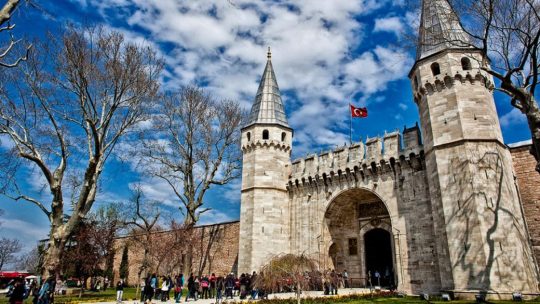
The buildings that are arranged
The famous Ottoman historian Evliya Celebi describes the Topkapi Palace (Topkapi Sarayi) as “the loveliest sultanate palace that human skill could have created. One can not help doing anything but ruling if living in here! If you can come out of this complex game that is made of terraces, corridors, stairs and interior courts; you find yourself in the world of Arabian Nights again. The palace once Ottoman Sultans lived is visited by thousands of visitors from all parts of the world, is the most splendid monument of Istanbul.
The palace had a concept peculiar to the East, accommodating several qualities in it: The residence of the Sultan and the center of a world empire, the religious center of half of the world and the stage that incredible intrigues displayed, the focus of cruel murders and the cradle of breathtaking successes. Once, 4,000-5,000 people used to live in Topkapi Palace. This was a city in the city. Fatih Sultan Mehmet decided to have a vast palace built to the ridges of old Byzantium Acropolis.
The reason Sultan Mehmet chose this place was not only the beauty of the ridges. He was planning to have a residential fortress built where Istanbul could be protected best. A high city wall, extending from Golden Horn as far as the Sea of Marmara, separating Topkapi Palace from the rest of the city. The Byzantium walls, beginning from the corner of the palace and stretching to Theodosian Walls through the shores of Marmara were protective against a possible sea attack.
The First Court
This front court that is connected to the main entrance with Bab-i Humayun (the Imperial Gate), once the Janissaries used to accommodate, serves as the parking area for the buses and cars bringing thousands of visitors today. On the left are Defterdar Dairesi (the Financial Department) and ig Cephane (the Interior Arsenal, the former Haghia Eirene Church); while the Archaeological Museum and Cinili Kosk (the Tiled Pavilion) that Mehmet U had built are located at the back.
The Second Court
The entrance to the palace is through the next gate, Bab-us Selam. Everybody had to get off his horse at this gate, but the Sultan since he was the only authorised one to pass through this gate on horse. When the foreign ambassadors would be welcomed, this court used to be crowded by the notables of the empire, the Janissaries and court guards used to gather here with their showy costumes.
The participants of these welcoming ceremonies could be up to 10,000 and the foreign guests mostly expressed their bewilderment against the silence that was dominant during the ceremonies. In the court, visited by thousands of people today, once gazelles, deers, goats and peacocks used to stroll under the cypress trees.
This court, the garden of silence and peace, and where the great and carefully planned ceremonies took place, used to reflect the spirit of the empire. The Divan (council of the state) used to gather at Kubbealti on the left. This domed, rectangular, plain place has low sofas (“divan”, in Turkish) covered with carpets, extending along with the walls in three sides of it.
The legendary grilled window above the Grand Vezir’s place is still there, the Sultan used to watch the discussions in Divan behind this window. Generally, the Divan used to gather four times between Sunday and Tuesday, and all sort of decisions relevant to administration were taken here. Orders were given, feudal fiets (timar) were delivered, complaints were listened, the decrees (firmans) were signed and the negotiations with the foreign ambassadors; all these used to take place here in Divan.
It was easy to understand the status of the officials and notables by looking at the arm shape and colour of their costumes or even linings, the fur, but first of all the turban and the style of their beard. The vezirs used to wear green, muftis white, mullahs light blue and ulema purple; while the ones relating to the court used to be distinguished by their red costumes, the colour of sheikhs was blue. Across Divan, the East of the second court, were the Dolap Ocagi and the kitchens. Meal for the ones living in the palace, which means thousands of people, was cooked here. It was one of the important porcelain collections of the world due to the variety of kitchen tools made of Chinese, Japanese and European porcelains as well as copper pots, bowls and cups.
Behind the third gate, Bab- tis-Saadet, was the Throne Room (Arz Odasi) where the Sultan waited for notables, ambassadors and foreign guests. In this room, furnished Ottoman/Turkish style, the Sultan used to accept his visitors sitting on showy pillows and precious carpets. The world beyond it, Enderun, was close for them too.
It will be helpful to see some part of the Harem before going this section. Harem was directed with strict rules and great care, and this director was never a man, it was the mother of the ruling Sultan, Valide Sultan. As a concept, Harem means the forbidden or holy place. There were many women slaves and eunuches in Harem along with the women taken into by the Sultan for their beauty. The most powerful one in the Harem was the Kizlar Agasi. That was the third important person of the Ottoman Empire, after the Grand Vezir and Sheikhulislam.
The Third Court
The walk in the Harem ends at its actual entrance in the Third Court. This lovely building, built in the 18th century is The Library of Ahmet III. The buildings that are arranged in an order where the thrones, valuable costumes, ornamented weapons, miniatures and the legendary treasures of the Sultans are exhibited today used to be the palace school. This school was probably the most important official institution of the East and one of the best educational institutions that survived in a feudal system. 48 of the 60 Grand Vezirs whose lives are well known were educated here, including four vezirs of Suleyman the Magnificent. The costume collection of the Sultan can be seen in the Turkish bath located to the East of the Third Court: Turkish fabrics woven of silk and artificial fiber, silk caftans, the Sultan’s garments and precious prayer rugs. In the four rooms of the world famous Treasury, also the first residence of Fatih Sultan Mehmet in Topkapi Palace, the legendary treasures that were collected by Ottoman Sultans for centuries are exhibited.
Helmets, daggers, the candlesticks made for the tomb of Prophet Mohammed and also an elephant-shaped play box made of gold are exhibited in the first room. In the second room is the famous Topkapi Dagger that has three emerald stones as well 12 big and 124 small diamonds on its handle; this dagger has become world famous after the movie that Melina Mercouri performs a skillful burglar. In the third room is the biggest emerald of the world, and the Harem, a separate world isolated from the rest of the palace, was composed of corridors, secondary courts, small gardens, stairs and various places around 300 in total.
Kasikci Elmasi (The Spoonmaker’s Diamond) that is 86 carats and ornamented with 49 diamonds. The name of the diamond comes from the incident that it was bought by a junk dealer in charge of three wooden spoons in the 17™ century. Each of the two candlesticks made of pure gold and weighs 49 kilograms and has 6666 diamonds.
Sultan Abdulmecit had them made for Kaaba at Mecca. The gold plated throne that is decorated with 954 emerald and ruby stones, is the one the Sultans used to sit during their admissions in Bab-us Saadet. The passage to the fourth room is through a terrace with a perfect view of the Sea of Marmara. A part of the Iran and Turkish miniature collection that has very much importance in terms of history of art, is exhibited in the building next to the Fourth Court.
The Turkish miniature art was at its peak in the 1sthand 161’1 century. The volumes of manuscripts were decorated with flowers, buds, the sky, clouds and people. The variety in the way that the nature, animals, rocks and architecture, drawings and the usage of gold are the indicator that these creations were made by several artists.
Although the Turkish miniatures look like Iranian and Arab miniatures at the first glimpse, generally they reflect the daily life; and it is possible to come across with the traces of romanticism and decorative examples. There is partial perspective in the miniatures as well as no lighting and shading. The remains of the holy Muslim personalities are exhibited in Hirka-i Saadet dairesi.
The overcoat, a piece of beard, flag and sword of the Prophet as well as the sword of the first four caliphs Abu Bekr, Umar, Othman and Ali are here. Also, the holy objects from Mecca are here: The keys and locks of Kaaba, the solid gold covering for the black Hacer ul-Esved stone that is holy for the Muslims.
The Fourth Court
In the adjacent garden stepping down in form of terraces are the fountains, Revan Koskui636), Bagdat Kosku (1639), an arbor from 1641 and Sofa Kosku from 18th century. Ending the visit to the Saray at the terrace of Mecidiye Kosku or at Teras Cafe at its lower floor. You can enjoy the wonderful panorama here.
Source and More: https://istanbul.doholiday.com/topkapi-palace/
0 notes
Text
5 notes
·
View notes
Photo

The buildings that are arranged
The famous Ottoman historian Evliya Celebi describes the Topkapi Palace (Topkapi Sarayi) as “the loveliest sultanate palace that human skill could have created. One can not help doing anything but ruling if living in here! If you can come out of this complex game that is made of terraces, corridors, stairs and interior courts; you find yourself in the world of Arabian Nights again. The palace once Ottoman Sultans lived is visited by thousands of visitors from all parts of the world, is the most splendid monument of Istanbul.
The palace had a concept peculiar to the East, accommodating several qualities in it: The residence of the Sultan and the center of a world empire, the religious center of half of the world and the stage that incredible intrigues displayed, the focus of cruel murders and the cradle of breathtaking successes. Once, 4,000-5,000 people used to live in Topkapi Palace. This was a city in the city. Fatih Sultan Mehmet decided to have a vast palace built to the ridges of old Byzantium Acropolis.
The reason Sultan Mehmet chose this place was not only the beauty of the ridges. He was planning to have a residential fortress built where Istanbul could be protected best. A high city wall, extending from Golden Horn as far as the Sea of Marmara, separating Topkapi Palace from the rest of the city. The Byzantium walls, beginning from the corner of the palace and stretching to Theodosian Walls through the shores of Marmara were protective against a possible sea attack.
The First Court
This front court that is connected to the main entrance with Bab-i Humayun (the Imperial Gate), once the Janissaries used to accommodate, serves as the parking area for the buses and cars bringing thousands of visitors today. On the left are Defterdar Dairesi (the Financial Department) and ig Cephane (the Interior Arsenal, the former Haghia Eirene Church); while the Archaeological Museum and Cinili Kosk (the Tiled Pavilion) that Mehmet U had built are located at the back.
The Second Court
The entrance to the palace is through the next gate, Bab-us Selam. Everybody had to get off his horse at this gate, but the Sultan since he was the only authorised one to pass through this gate on horse. When the foreign ambassadors would be welcomed, this court used to be crowded by the notables of the empire, the Janissaries and court guards used to gather here with their showy costumes.
The participants of these welcoming ceremonies could be up to 10,000 and the foreign guests mostly expressed their bewilderment against the silence that was dominant during the ceremonies. In the court, visited by thousands of people today, once gazelles, deers, goats and peacocks used to stroll under the cypress trees.
This court, the garden of silence and peace, and where the great and carefully planned ceremonies took place, used to reflect the spirit of the empire. The Divan (council of the state) used to gather at Kubbealti on the left. This domed, rectangular, plain place has low sofas (“divan”, in Turkish) covered with carpets, extending along with the walls in three sides of it.
The legendary grilled window above the Grand Vezir’s place is still there, the Sultan used to watch the discussions in Divan behind this window. Generally, the Divan used to gather four times between Sunday and Tuesday, and all sort of decisions relevant to administration were taken here. Orders were given, feudal fiets (timar) were delivered, complaints were listened, the decrees (firmans) were signed and the negotiations with the foreign ambassadors; all these used to take place here in Divan.
It was easy to understand the status of the officials and notables by looking at the arm shape and colour of their costumes or even linings, the fur, but first of all the turban and the style of their beard. The vezirs used to wear green, muftis white, mullahs light blue and ulema purple; while the ones relating to the court used to be distinguished by their red costumes, the colour of sheikhs was blue. Across Divan, the East of the second court, were the Dolap Ocagi and the kitchens. Meal for the ones living in the palace, which means thousands of people, was cooked here. It was one of the important porcelain collections of the world due to the variety of kitchen tools made of Chinese, Japanese and European porcelains as well as copper pots, bowls and cups.
Behind the third gate, Bab- tis-Saadet, was the Throne Room (Arz Odasi) where the Sultan waited for notables, ambassadors and foreign guests. In this room, furnished Ottoman/Turkish style, the Sultan used to accept his visitors sitting on showy pillows and precious carpets. The world beyond it, Enderun, was close for them too.
It will be helpful to see some part of the Harem before going this section. Harem was directed with strict rules and great care, and this director was never a man, it was the mother of the ruling Sultan, Valide Sultan. As a concept, Harem means the forbidden or holy place. There were many women slaves and eunuches in Harem along with the women taken into by the Sultan for their beauty. The most powerful one in the Harem was the Kizlar Agasi. That was the third important person of the Ottoman Empire, after the Grand Vezir and Sheikhulislam.
The Third Court
The walk in the Harem ends at its actual entrance in the Third Court. This lovely building, built in the 18th century is The Library of Ahmet III. The buildings that are arranged in an order where the thrones, valuable costumes, ornamented weapons, miniatures and the legendary treasures of the Sultans are exhibited today used to be the palace school. This school was probably the most important official institution of the East and one of the best educational institutions that survived in a feudal system. 48 of the 60 Grand Vezirs whose lives are well known were educated here, including four vezirs of Suleyman the Magnificent. The costume collection of the Sultan can be seen in the Turkish bath located to the East of the Third Court: Turkish fabrics woven of silk and artificial fiber, silk caftans, the Sultan’s garments and precious prayer rugs. In the four rooms of the world famous Treasury, also the first residence of Fatih Sultan Mehmet in Topkapi Palace, the legendary treasures that were collected by Ottoman Sultans for centuries are exhibited.
Helmets, daggers, the candlesticks made for the tomb of Prophet Mohammed and also an elephant-shaped play box made of gold are exhibited in the first room. In the second room is the famous Topkapi Dagger that has three emerald stones as well 12 big and 124 small diamonds on its handle; this dagger has become world famous after the movie that Melina Mercouri performs a skillful burglar. In the third room is the biggest emerald of the world, and the Harem, a separate world isolated from the rest of the palace, was composed of corridors, secondary courts, small gardens, stairs and various places around 300 in total.
Kasikci Elmasi (The Spoonmaker’s Diamond) that is 86 carats and ornamented with 49 diamonds. The name of the diamond comes from the incident that it was bought by a junk dealer in charge of three wooden spoons in the 17™ century. Each of the two candlesticks made of pure gold and weighs 49 kilograms and has 6666 diamonds.
Sultan Abdulmecit had them made for Kaaba at Mecca. The gold plated throne that is decorated with 954 emerald and ruby stones, is the one the Sultans used to sit during their admissions in Bab-us Saadet. The passage to the fourth room is through a terrace with a perfect view of the Sea of Marmara. A part of the Iran and Turkish miniature collection that has very much importance in terms of history of art, is exhibited in the building next to the Fourth Court.
The Turkish miniature art was at its peak in the 1sthand 161’1 century. The volumes of manuscripts were decorated with flowers, buds, the sky, clouds and people. The variety in the way that the nature, animals, rocks and architecture, drawings and the usage of gold are the indicator that these creations were made by several artists.
Although the Turkish miniatures look like Iranian and Arab miniatures at the first glimpse, generally they reflect the daily life; and it is possible to come across with the traces of romanticism and decorative examples. There is partial perspective in the miniatures as well as no lighting and shading. The remains of the holy Muslim personalities are exhibited in Hirka-i Saadet dairesi.
The overcoat, a piece of beard, flag and sword of the Prophet as well as the sword of the first four caliphs Abu Bekr, Umar, Othman and Ali are here. Also, the holy objects from Mecca are here: The keys and locks of Kaaba, the solid gold covering for the black Hacer ul-Esved stone that is holy for the Muslims.
The Fourth Court
In the adjacent garden stepping down in form of terraces are the fountains, Revan Koskui636), Bagdat Kosku (1639), an arbor from 1641 and Sofa Kosku from 18th century. Ending the visit to the Saray at the terrace of Mecidiye Kosku or at Teras Cafe at its lower floor. You can enjoy the wonderful panorama here.
Source and More: https://istanbul.doholiday.com/topkapi-palace/
0 notes
Photo
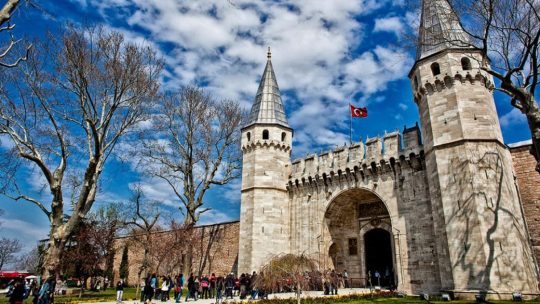
The buildings that are arranged
The famous Ottoman historian Evliya Celebi describes the Topkapi Palace (Topkapi Sarayi) as “the loveliest sultanate palace that human skill could have created. One can not help doing anything but ruling if living in here! If you can come out of this complex game that is made of terraces, corridors, stairs and interior courts; you find yourself in the world of Arabian Nights again. The palace once Ottoman Sultans lived is visited by thousands of visitors from all parts of the world, is the most splendid monument of Istanbul.
The palace had a concept peculiar to the East, accommodating several qualities in it: The residence of the Sultan and the center of a world empire, the religious center of half of the world and the stage that incredible intrigues displayed, the focus of cruel murders and the cradle of breathtaking successes. Once, 4,000-5,000 people used to live in Topkapi Palace. This was a city in the city. Fatih Sultan Mehmet decided to have a vast palace built to the ridges of old Byzantium Acropolis.
The reason Sultan Mehmet chose this place was not only the beauty of the ridges. He was planning to have a residential fortress built where Istanbul could be protected best. A high city wall, extending from Golden Horn as far as the Sea of Marmara, separating Topkapi Palace from the rest of the city. The Byzantium walls, beginning from the corner of the palace and stretching to Theodosian Walls through the shores of Marmara were protective against a possible sea attack.
The First Court
This front court that is connected to the main entrance with Bab-i Humayun (the Imperial Gate), once the Janissaries used to accommodate, serves as the parking area for the buses and cars bringing thousands of visitors today. On the left are Defterdar Dairesi (the Financial Department) and ig Cephane (the Interior Arsenal, the former Haghia Eirene Church); while the Archaeological Museum and Cinili Kosk (the Tiled Pavilion) that Mehmet U had built are located at the back.
The Second Court
The entrance to the palace is through the next gate, Bab-us Selam. Everybody had to get off his horse at this gate, but the Sultan since he was the only authorised one to pass through this gate on horse. When the foreign ambassadors would be welcomed, this court used to be crowded by the notables of the empire, the Janissaries and court guards used to gather here with their showy costumes.
The participants of these welcoming ceremonies could be up to 10,000 and the foreign guests mostly expressed their bewilderment against the silence that was dominant during the ceremonies. In the court, visited by thousands of people today, once gazelles, deers, goats and peacocks used to stroll under the cypress trees.
This court, the garden of silence and peace, and where the great and carefully planned ceremonies took place, used to reflect the spirit of the empire. The Divan (council of the state) used to gather at Kubbealti on the left. This domed, rectangular, plain place has low sofas (“divan”, in Turkish) covered with carpets, extending along with the walls in three sides of it.
The legendary grilled window above the Grand Vezir’s place is still there, the Sultan used to watch the discussions in Divan behind this window. Generally, the Divan used to gather four times between Sunday and Tuesday, and all sort of decisions relevant to administration were taken here. Orders were given, feudal fiets (timar) were delivered, complaints were listened, the decrees (firmans) were signed and the negotiations with the foreign ambassadors; all these used to take place here in Divan.
It was easy to understand the status of the officials and notables by looking at the arm shape and colour of their costumes or even linings, the fur, but first of all the turban and the style of their beard. The vezirs used to wear green, muftis white, mullahs light blue and ulema purple; while the ones relating to the court used to be distinguished by their red costumes, the colour of sheikhs was blue. Across Divan, the East of the second court, were the Dolap Ocagi and the kitchens. Meal for the ones living in the palace, which means thousands of people, was cooked here. It was one of the important porcelain collections of the world due to the variety of kitchen tools made of Chinese, Japanese and European porcelains as well as copper pots, bowls and cups.
Behind the third gate, Bab- tis-Saadet, was the Throne Room (Arz Odasi) where the Sultan waited for notables, ambassadors and foreign guests. In this room, furnished Ottoman/Turkish style, the Sultan used to accept his visitors sitting on showy pillows and precious carpets. The world beyond it, Enderun, was close for them too.
It will be helpful to see some part of the Harem before going this section. Harem was directed with strict rules and great care, and this director was never a man, it was the mother of the ruling Sultan, Valide Sultan. As a concept, Harem means the forbidden or holy place. There were many women slaves and eunuches in Harem along with the women taken into by the Sultan for their beauty. The most powerful one in the Harem was the Kizlar Agasi. That was the third important person of the Ottoman Empire, after the Grand Vezir and Sheikhulislam.
The Third Court
The walk in the Harem ends at its actual entrance in the Third Court. This lovely building, built in the 18th century is The Library of Ahmet III. The buildings that are arranged in an order where the thrones, valuable costumes, ornamented weapons, miniatures and the legendary treasures of the Sultans are exhibited today used to be the palace school. This school was probably the most important official institution of the East and one of the best educational institutions that survived in a feudal system. 48 of the 60 Grand Vezirs whose lives are well known were educated here, including four vezirs of Suleyman the Magnificent. The costume collection of the Sultan can be seen in the Turkish bath located to the East of the Third Court: Turkish fabrics woven of silk and artificial fiber, silk caftans, the Sultan’s garments and precious prayer rugs. In the four rooms of the world famous Treasury, also the first residence of Fatih Sultan Mehmet in Topkapi Palace, the legendary treasures that were collected by Ottoman Sultans for centuries are exhibited.
Helmets, daggers, the candlesticks made for the tomb of Prophet Mohammed and also an elephant-shaped play box made of gold are exhibited in the first room. In the second room is the famous Topkapi Dagger that has three emerald stones as well 12 big and 124 small diamonds on its handle; this dagger has become world famous after the movie that Melina Mercouri performs a skillful burglar. In the third room is the biggest emerald of the world, and the Harem, a separate world isolated from the rest of the palace, was composed of corridors, secondary courts, small gardens, stairs and various places around 300 in total.
Kasikci Elmasi (The Spoonmaker’s Diamond) that is 86 carats and ornamented with 49 diamonds. The name of the diamond comes from the incident that it was bought by a junk dealer in charge of three wooden spoons in the 17™ century. Each of the two candlesticks made of pure gold and weighs 49 kilograms and has 6666 diamonds.
Sultan Abdulmecit had them made for Kaaba at Mecca. The gold plated throne that is decorated with 954 emerald and ruby stones, is the one the Sultans used to sit during their admissions in Bab-us Saadet. The passage to the fourth room is through a terrace with a perfect view of the Sea of Marmara. A part of the Iran and Turkish miniature collection that has very much importance in terms of history of art, is exhibited in the building next to the Fourth Court.
The Turkish miniature art was at its peak in the 1sthand 161’1 century. The volumes of manuscripts were decorated with flowers, buds, the sky, clouds and people. The variety in the way that the nature, animals, rocks and architecture, drawings and the usage of gold are the indicator that these creations were made by several artists.
Although the Turkish miniatures look like Iranian and Arab miniatures at the first glimpse, generally they reflect the daily life; and it is possible to come across with the traces of romanticism and decorative examples. There is partial perspective in the miniatures as well as no lighting and shading. The remains of the holy Muslim personalities are exhibited in Hirka-i Saadet dairesi.
The overcoat, a piece of beard, flag and sword of the Prophet as well as the sword of the first four caliphs Abu Bekr, Umar, Othman and Ali are here. Also, the holy objects from Mecca are here: The keys and locks of Kaaba, the solid gold covering for the black Hacer ul-Esved stone that is holy for the Muslims.
The Fourth Court
In the adjacent garden stepping down in form of terraces are the fountains, Revan Koskui636), Bagdat Kosku (1639), an arbor from 1641 and Sofa Kosku from 18th century. Ending the visit to the Saray at the terrace of Mecidiye Kosku or at Teras Cafe at its lower floor. You can enjoy the wonderful panorama here.
Source and More: https://istanbul.doholiday.com/topkapi-palace/
0 notes
Photo
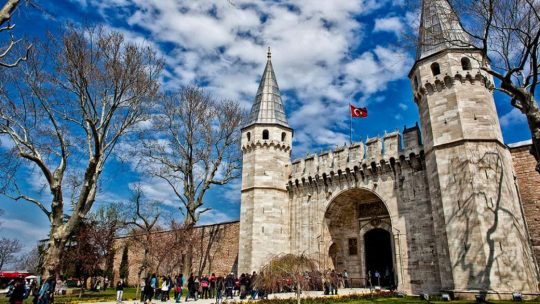
The buildings that are arranged
The famous Ottoman historian Evliya Celebi describes the Topkapi Palace (Topkapi Sarayi) as “the loveliest sultanate palace that human skill could have created. One can not help doing anything but ruling if living in here! If you can come out of this complex game that is made of terraces, corridors, stairs and interior courts; you find yourself in the world of Arabian Nights again. The palace once Ottoman Sultans lived is visited by thousands of visitors from all parts of the world, is the most splendid monument of Istanbul.
The palace had a concept peculiar to the East, accommodating several qualities in it: The residence of the Sultan and the center of a world empire, the religious center of half of the world and the stage that incredible intrigues displayed, the focus of cruel murders and the cradle of breathtaking successes. Once, 4,000-5,000 people used to live in Topkapi Palace. This was a city in the city. Fatih Sultan Mehmet decided to have a vast palace built to the ridges of old Byzantium Acropolis.
The reason Sultan Mehmet chose this place was not only the beauty of the ridges. He was planning to have a residential fortress built where Istanbul could be protected best. A high city wall, extending from Golden Horn as far as the Sea of Marmara, separating Topkapi Palace from the rest of the city. The Byzantium walls, beginning from the corner of the palace and stretching to Theodosian Walls through the shores of Marmara were protective against a possible sea attack.
The First Court
This front court that is connected to the main entrance with Bab-i Humayun (the Imperial Gate), once the Janissaries used to accommodate, serves as the parking area for the buses and cars bringing thousands of visitors today. On the left are Defterdar Dairesi (the Financial Department) and ig Cephane (the Interior Arsenal, the former Haghia Eirene Church); while the Archaeological Museum and Cinili Kosk (the Tiled Pavilion) that Mehmet U had built are located at the back.
The Second Court
The entrance to the palace is through the next gate, Bab-us Selam. Everybody had to get off his horse at this gate, but the Sultan since he was the only authorised one to pass through this gate on horse. When the foreign ambassadors would be welcomed, this court used to be crowded by the notables of the empire, the Janissaries and court guards used to gather here with their showy costumes.
The participants of these welcoming ceremonies could be up to 10,000 and the foreign guests mostly expressed their bewilderment against the silence that was dominant during the ceremonies. In the court, visited by thousands of people today, once gazelles, deers, goats and peacocks used to stroll under the cypress trees.
This court, the garden of silence and peace, and where the great and carefully planned ceremonies took place, used to reflect the spirit of the empire. The Divan (council of the state) used to gather at Kubbealti on the left. This domed, rectangular, plain place has low sofas (“divan”, in Turkish) covered with carpets, extending along with the walls in three sides of it.
The legendary grilled window above the Grand Vezir’s place is still there, the Sultan used to watch the discussions in Divan behind this window. Generally, the Divan used to gather four times between Sunday and Tuesday, and all sort of decisions relevant to administration were taken here. Orders were given, feudal fiets (timar) were delivered, complaints were listened, the decrees (firmans) were signed and the negotiations with the foreign ambassadors; all these used to take place here in Divan.
It was easy to understand the status of the officials and notables by looking at the arm shape and colour of their costumes or even linings, the fur, but first of all the turban and the style of their beard. The vezirs used to wear green, muftis white, mullahs light blue and ulema purple; while the ones relating to the court used to be distinguished by their red costumes, the colour of sheikhs was blue. Across Divan, the East of the second court, were the Dolap Ocagi and the kitchens. Meal for the ones living in the palace, which means thousands of people, was cooked here. It was one of the important porcelain collections of the world due to the variety of kitchen tools made of Chinese, Japanese and European porcelains as well as copper pots, bowls and cups.
Behind the third gate, Bab- tis-Saadet, was the Throne Room (Arz Odasi) where the Sultan waited for notables, ambassadors and foreign guests. In this room, furnished Ottoman/Turkish style, the Sultan used to accept his visitors sitting on showy pillows and precious carpets. The world beyond it, Enderun, was close for them too.
It will be helpful to see some part of the Harem before going this section. Harem was directed with strict rules and great care, and this director was never a man, it was the mother of the ruling Sultan, Valide Sultan. As a concept, Harem means the forbidden or holy place. There were many women slaves and eunuches in Harem along with the women taken into by the Sultan for their beauty. The most powerful one in the Harem was the Kizlar Agasi. That was the third important person of the Ottoman Empire, after the Grand Vezir and Sheikhulislam.
The Third Court
The walk in the Harem ends at its actual entrance in the Third Court. This lovely building, built in the 18th century is The Library of Ahmet III. The buildings that are arranged in an order where the thrones, valuable costumes, ornamented weapons, miniatures and the legendary treasures of the Sultans are exhibited today used to be the palace school. This school was probably the most important official institution of the East and one of the best educational institutions that survived in a feudal system. 48 of the 60 Grand Vezirs whose lives are well known were educated here, including four vezirs of Suleyman the Magnificent. The costume collection of the Sultan can be seen in the Turkish bath located to the East of the Third Court: Turkish fabrics woven of silk and artificial fiber, silk caftans, the Sultan’s garments and precious prayer rugs. In the four rooms of the world famous Treasury, also the first residence of Fatih Sultan Mehmet in Topkapi Palace, the legendary treasures that were collected by Ottoman Sultans for centuries are exhibited.
Helmets, daggers, the candlesticks made for the tomb of Prophet Mohammed and also an elephant-shaped play box made of gold are exhibited in the first room. In the second room is the famous Topkapi Dagger that has three emerald stones as well 12 big and 124 small diamonds on its handle; this dagger has become world famous after the movie that Melina Mercouri performs a skillful burglar. In the third room is the biggest emerald of the world, and the Harem, a separate world isolated from the rest of the palace, was composed of corridors, secondary courts, small gardens, stairs and various places around 300 in total.
Kasikci Elmasi (The Spoonmaker’s Diamond) that is 86 carats and ornamented with 49 diamonds. The name of the diamond comes from the incident that it was bought by a junk dealer in charge of three wooden spoons in the 17™ century. Each of the two candlesticks made of pure gold and weighs 49 kilograms and has 6666 diamonds.
Sultan Abdulmecit had them made for Kaaba at Mecca. The gold plated throne that is decorated with 954 emerald and ruby stones, is the one the Sultans used to sit during their admissions in Bab-us Saadet. The passage to the fourth room is through a terrace with a perfect view of the Sea of Marmara. A part of the Iran and Turkish miniature collection that has very much importance in terms of history of art, is exhibited in the building next to the Fourth Court.
The Turkish miniature art was at its peak in the 1sthand 161’1 century. The volumes of manuscripts were decorated with flowers, buds, the sky, clouds and people. The variety in the way that the nature, animals, rocks and architecture, drawings and the usage of gold are the indicator that these creations were made by several artists.
Although the Turkish miniatures look like Iranian and Arab miniatures at the first glimpse, generally they reflect the daily life; and it is possible to come across with the traces of romanticism and decorative examples. There is partial perspective in the miniatures as well as no lighting and shading. The remains of the holy Muslim personalities are exhibited in Hirka-i Saadet dairesi.
The overcoat, a piece of beard, flag and sword of the Prophet as well as the sword of the first four caliphs Abu Bekr, Umar, Othman and Ali are here. Also, the holy objects from Mecca are here: The keys and locks of Kaaba, the solid gold covering for the black Hacer ul-Esved stone that is holy for the Muslims.
The Fourth Court
In the adjacent garden stepping down in form of terraces are the fountains, Revan Koskui636), Bagdat Kosku (1639), an arbor from 1641 and Sofa Kosku from 18th century. Ending the visit to the Saray at the terrace of Mecidiye Kosku or at Teras Cafe at its lower floor. You can enjoy the wonderful panorama here.
Source and More: https://istanbul.doholiday.com/topkapi-palace/
0 notes
Photo
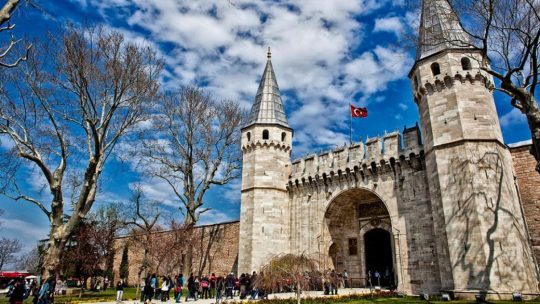
The buildings that are arranged
The famous Ottoman historian Evliya Celebi describes the Topkapi Palace (Topkapi Sarayi) as “the loveliest sultanate palace that human skill could have created. One can not help doing anything but ruling if living in here! If you can come out of this complex game that is made of terraces, corridors, stairs and interior courts; you find yourself in the world of Arabian Nights again. The palace once Ottoman Sultans lived is visited by thousands of visitors from all parts of the world, is the most splendid monument of Istanbul.
The palace had a concept peculiar to the East, accommodating several qualities in it: The residence of the Sultan and the center of a world empire, the religious center of half of the world and the stage that incredible intrigues displayed, the focus of cruel murders and the cradle of breathtaking successes. Once, 4,000-5,000 people used to live in Topkapi Palace. This was a city in the city. Fatih Sultan Mehmet decided to have a vast palace built to the ridges of old Byzantium Acropolis.
The reason Sultan Mehmet chose this place was not only the beauty of the ridges. He was planning to have a residential fortress built where Istanbul could be protected best. A high city wall, extending from Golden Horn as far as the Sea of Marmara, separating Topkapi Palace from the rest of the city. The Byzantium walls, beginning from the corner of the palace and stretching to Theodosian Walls through the shores of Marmara were protective against a possible sea attack.
The First Court
This front court that is connected to the main entrance with Bab-i Humayun (the Imperial Gate), once the Janissaries used to accommodate, serves as the parking area for the buses and cars bringing thousands of visitors today. On the left are Defterdar Dairesi (the Financial Department) and ig Cephane (the Interior Arsenal, the former Haghia Eirene Church); while the Archaeological Museum and Cinili Kosk (the Tiled Pavilion) that Mehmet U had built are located at the back.
The Second Court
The entrance to the palace is through the next gate, Bab-us Selam. Everybody had to get off his horse at this gate, but the Sultan since he was the only authorised one to pass through this gate on horse. When the foreign ambassadors would be welcomed, this court used to be crowded by the notables of the empire, the Janissaries and court guards used to gather here with their showy costumes.
The participants of these welcoming ceremonies could be up to 10,000 and the foreign guests mostly expressed their bewilderment against the silence that was dominant during the ceremonies. In the court, visited by thousands of people today, once gazelles, deers, goats and peacocks used to stroll under the cypress trees.
This court, the garden of silence and peace, and where the great and carefully planned ceremonies took place, used to reflect the spirit of the empire. The Divan (council of the state) used to gather at Kubbealti on the left. This domed, rectangular, plain place has low sofas (“divan”, in Turkish) covered with carpets, extending along with the walls in three sides of it.
The legendary grilled window above the Grand Vezir’s place is still there, the Sultan used to watch the discussions in Divan behind this window. Generally, the Divan used to gather four times between Sunday and Tuesday, and all sort of decisions relevant to administration were taken here. Orders were given, feudal fiets (timar) were delivered, complaints were listened, the decrees (firmans) were signed and the negotiations with the foreign ambassadors; all these used to take place here in Divan.
It was easy to understand the status of the officials and notables by looking at the arm shape and colour of their costumes or even linings, the fur, but first of all the turban and the style of their beard. The vezirs used to wear green, muftis white, mullahs light blue and ulema purple; while the ones relating to the court used to be distinguished by their red costumes, the colour of sheikhs was blue. Across Divan, the East of the second court, were the Dolap Ocagi and the kitchens. Meal for the ones living in the palace, which means thousands of people, was cooked here. It was one of the important porcelain collections of the world due to the variety of kitchen tools made of Chinese, Japanese and European porcelains as well as copper pots, bowls and cups.
Behind the third gate, Bab- tis-Saadet, was the Throne Room (Arz Odasi) where the Sultan waited for notables, ambassadors and foreign guests. In this room, furnished Ottoman/Turkish style, the Sultan used to accept his visitors sitting on showy pillows and precious carpets. The world beyond it, Enderun, was close for them too.
It will be helpful to see some part of the Harem before going this section. Harem was directed with strict rules and great care, and this director was never a man, it was the mother of the ruling Sultan, Valide Sultan. As a concept, Harem means the forbidden or holy place. There were many women slaves and eunuches in Harem along with the women taken into by the Sultan for their beauty. The most powerful one in the Harem was the Kizlar Agasi. That was the third important person of the Ottoman Empire, after the Grand Vezir and Sheikhulislam.
The Third Court
The walk in the Harem ends at its actual entrance in the Third Court. This lovely building, built in the 18th century is The Library of Ahmet III. The buildings that are arranged in an order where the thrones, valuable costumes, ornamented weapons, miniatures and the legendary treasures of the Sultans are exhibited today used to be the palace school. This school was probably the most important official institution of the East and one of the best educational institutions that survived in a feudal system. 48 of the 60 Grand Vezirs whose lives are well known were educated here, including four vezirs of Suleyman the Magnificent. The costume collection of the Sultan can be seen in the Turkish bath located to the East of the Third Court: Turkish fabrics woven of silk and artificial fiber, silk caftans, the Sultan’s garments and precious prayer rugs. In the four rooms of the world famous Treasury, also the first residence of Fatih Sultan Mehmet in Topkapi Palace, the legendary treasures that were collected by Ottoman Sultans for centuries are exhibited.
Helmets, daggers, the candlesticks made for the tomb of Prophet Mohammed and also an elephant-shaped play box made of gold are exhibited in the first room. In the second room is the famous Topkapi Dagger that has three emerald stones as well 12 big and 124 small diamonds on its handle; this dagger has become world famous after the movie that Melina Mercouri performs a skillful burglar. In the third room is the biggest emerald of the world, and the Harem, a separate world isolated from the rest of the palace, was composed of corridors, secondary courts, small gardens, stairs and various places around 300 in total.
Kasikci Elmasi (The Spoonmaker’s Diamond) that is 86 carats and ornamented with 49 diamonds. The name of the diamond comes from the incident that it was bought by a junk dealer in charge of three wooden spoons in the 17™ century. Each of the two candlesticks made of pure gold and weighs 49 kilograms and has 6666 diamonds.
Sultan Abdulmecit had them made for Kaaba at Mecca. The gold plated throne that is decorated with 954 emerald and ruby stones, is the one the Sultans used to sit during their admissions in Bab-us Saadet. The passage to the fourth room is through a terrace with a perfect view of the Sea of Marmara. A part of the Iran and Turkish miniature collection that has very much importance in terms of history of art, is exhibited in the building next to the Fourth Court.
The Turkish miniature art was at its peak in the 1sthand 161’1 century. The volumes of manuscripts were decorated with flowers, buds, the sky, clouds and people. The variety in the way that the nature, animals, rocks and architecture, drawings and the usage of gold are the indicator that these creations were made by several artists.
Although the Turkish miniatures look like Iranian and Arab miniatures at the first glimpse, generally they reflect the daily life; and it is possible to come across with the traces of romanticism and decorative examples. There is partial perspective in the miniatures as well as no lighting and shading. The remains of the holy Muslim personalities are exhibited in Hirka-i Saadet dairesi.
The overcoat, a piece of beard, flag and sword of the Prophet as well as the sword of the first four caliphs Abu Bekr, Umar, Othman and Ali are here. Also, the holy objects from Mecca are here: The keys and locks of Kaaba, the solid gold covering for the black Hacer ul-Esved stone that is holy for the Muslims.
The Fourth Court
In the adjacent garden stepping down in form of terraces are the fountains, Revan Koskui636), Bagdat Kosku (1639), an arbor from 1641 and Sofa Kosku from 18th century. Ending the visit to the Saray at the terrace of Mecidiye Kosku or at Teras Cafe at its lower floor. You can enjoy the wonderful panorama here.
Source and More: https://istanbul.doholiday.com/topkapi-palace/
0 notes